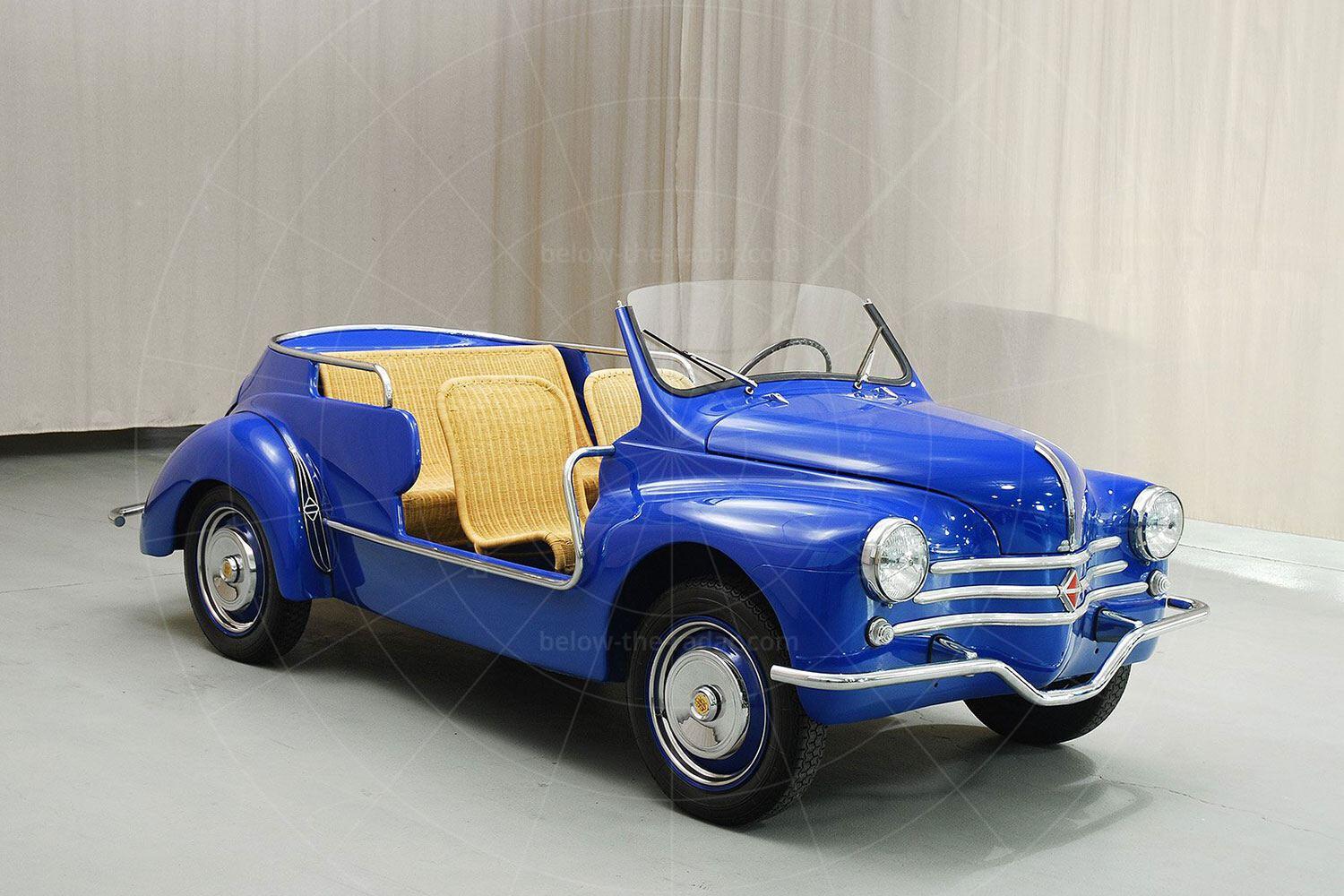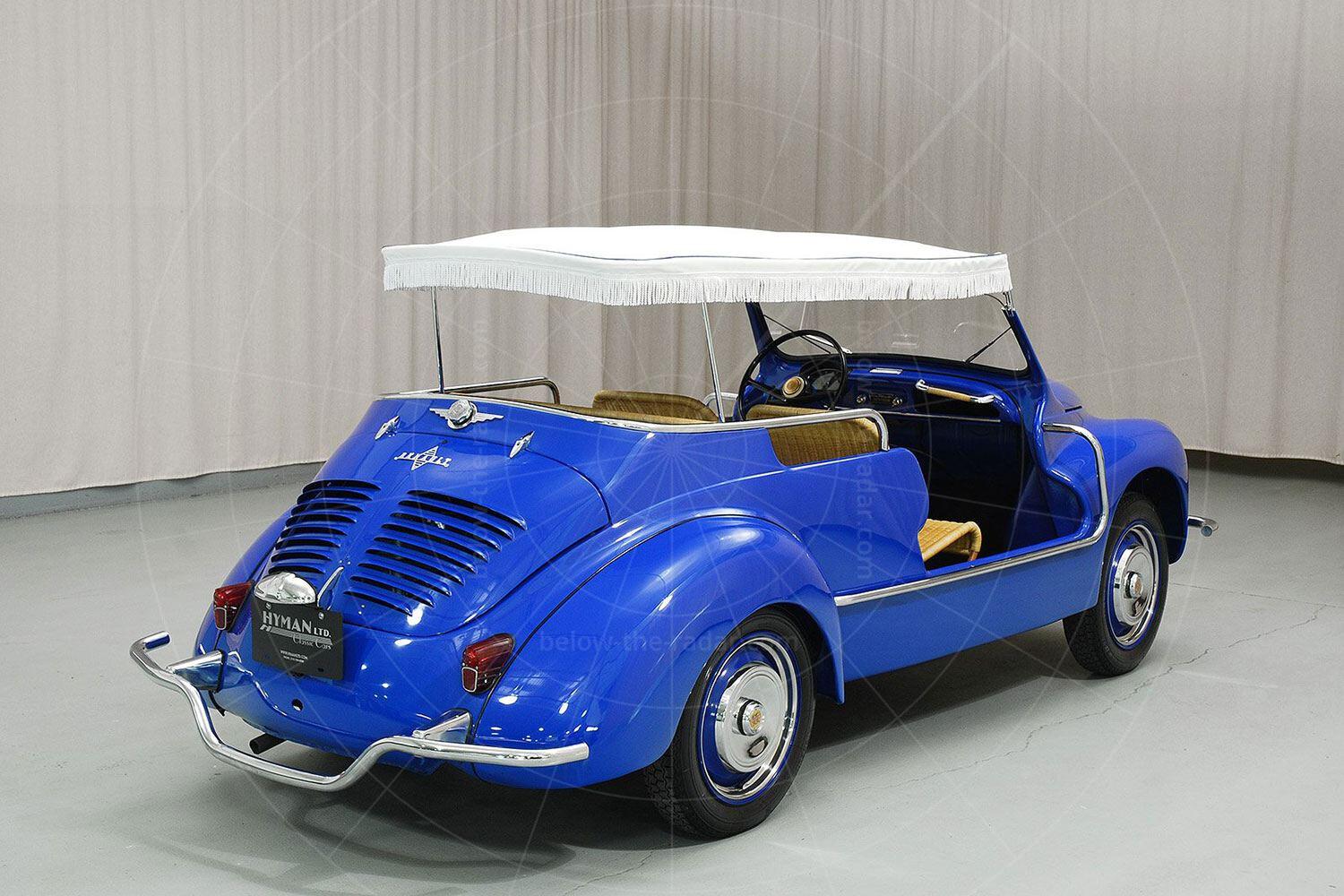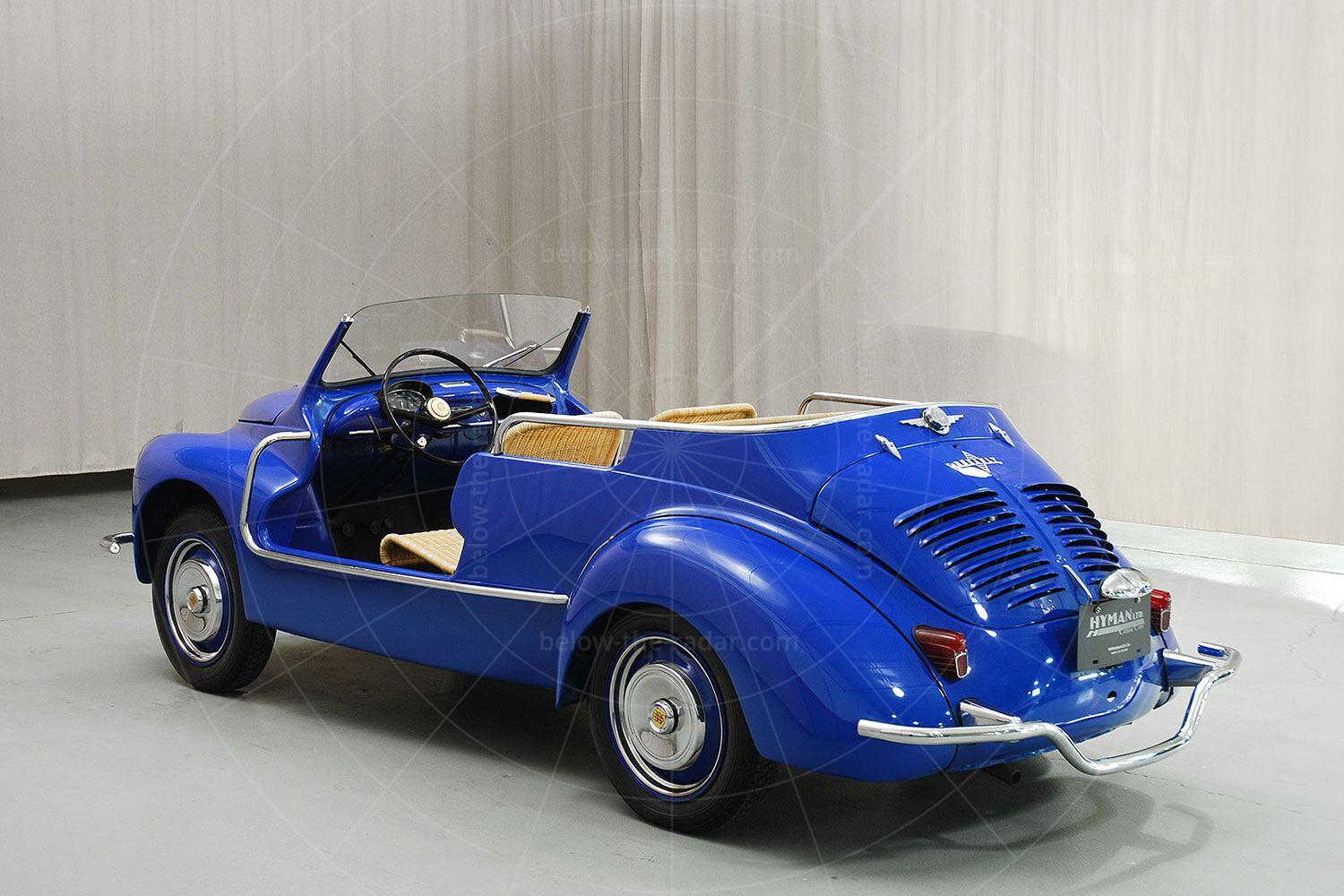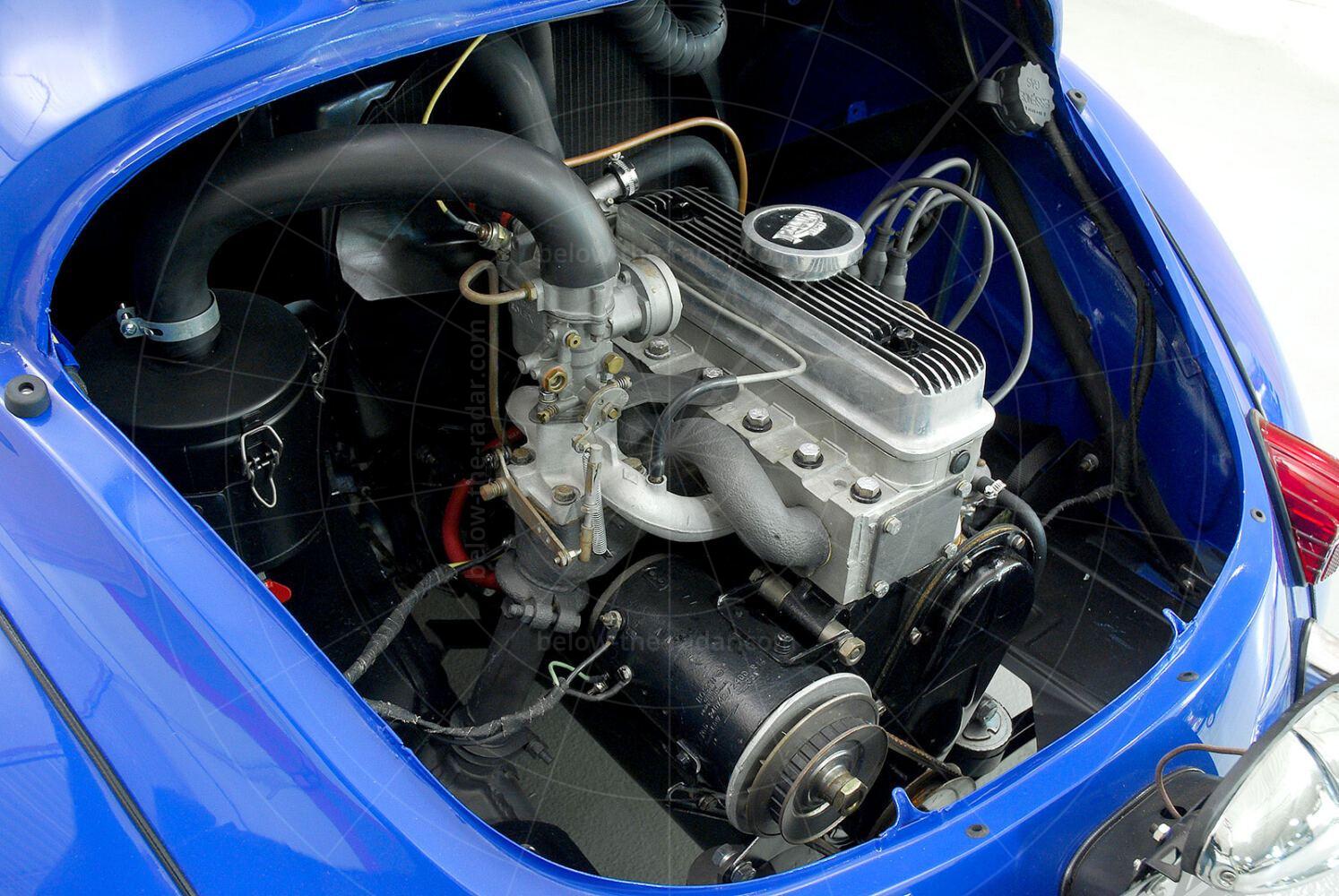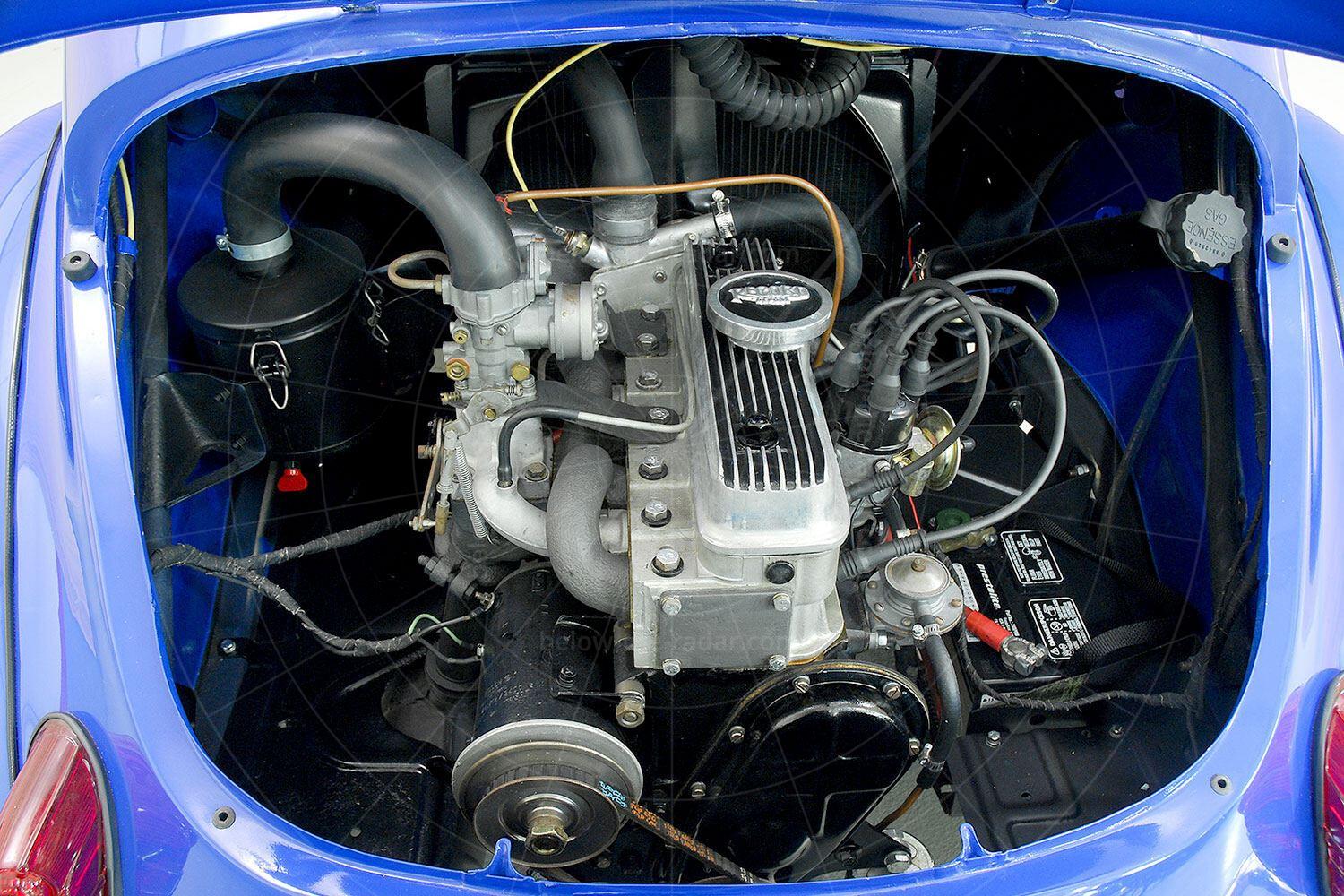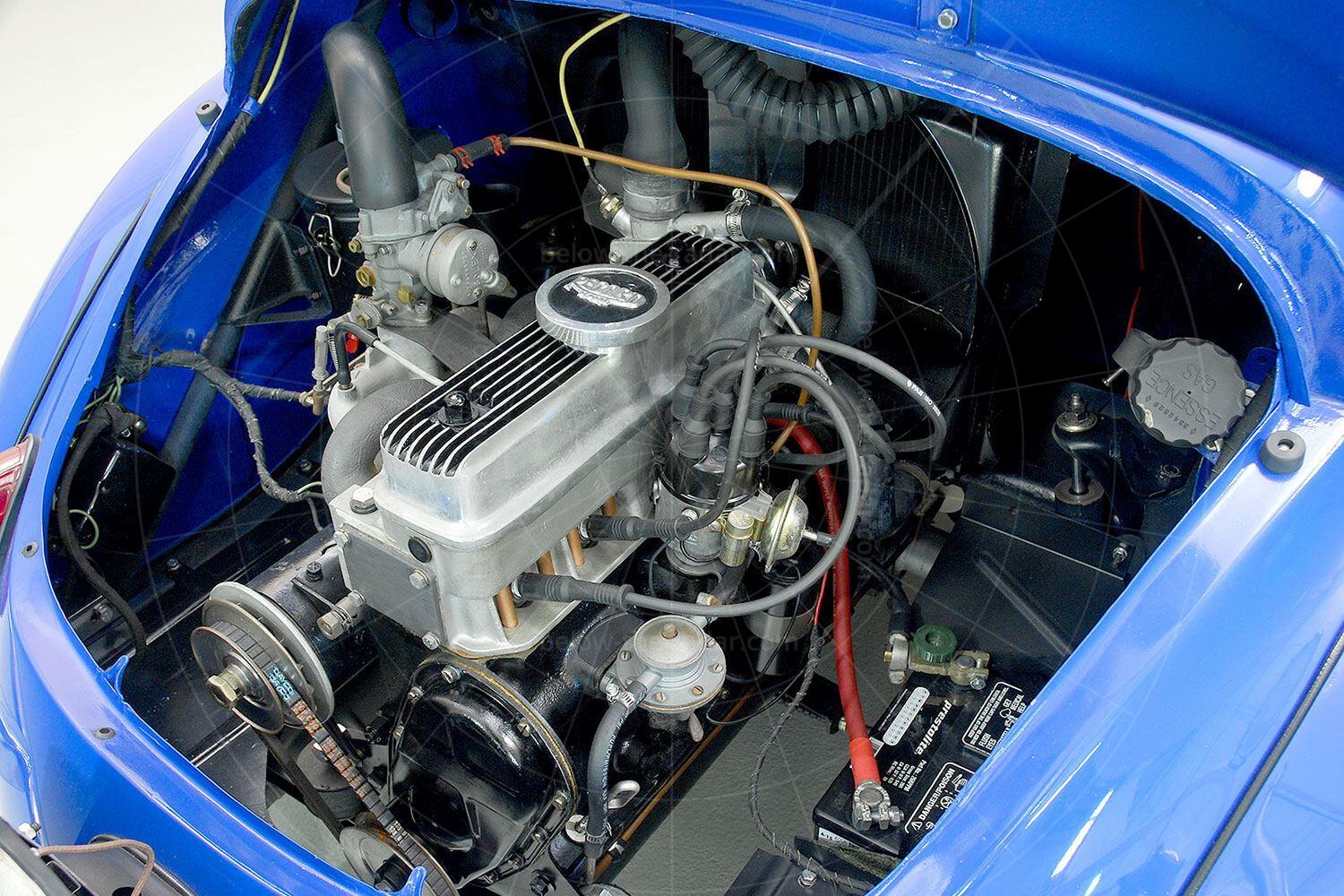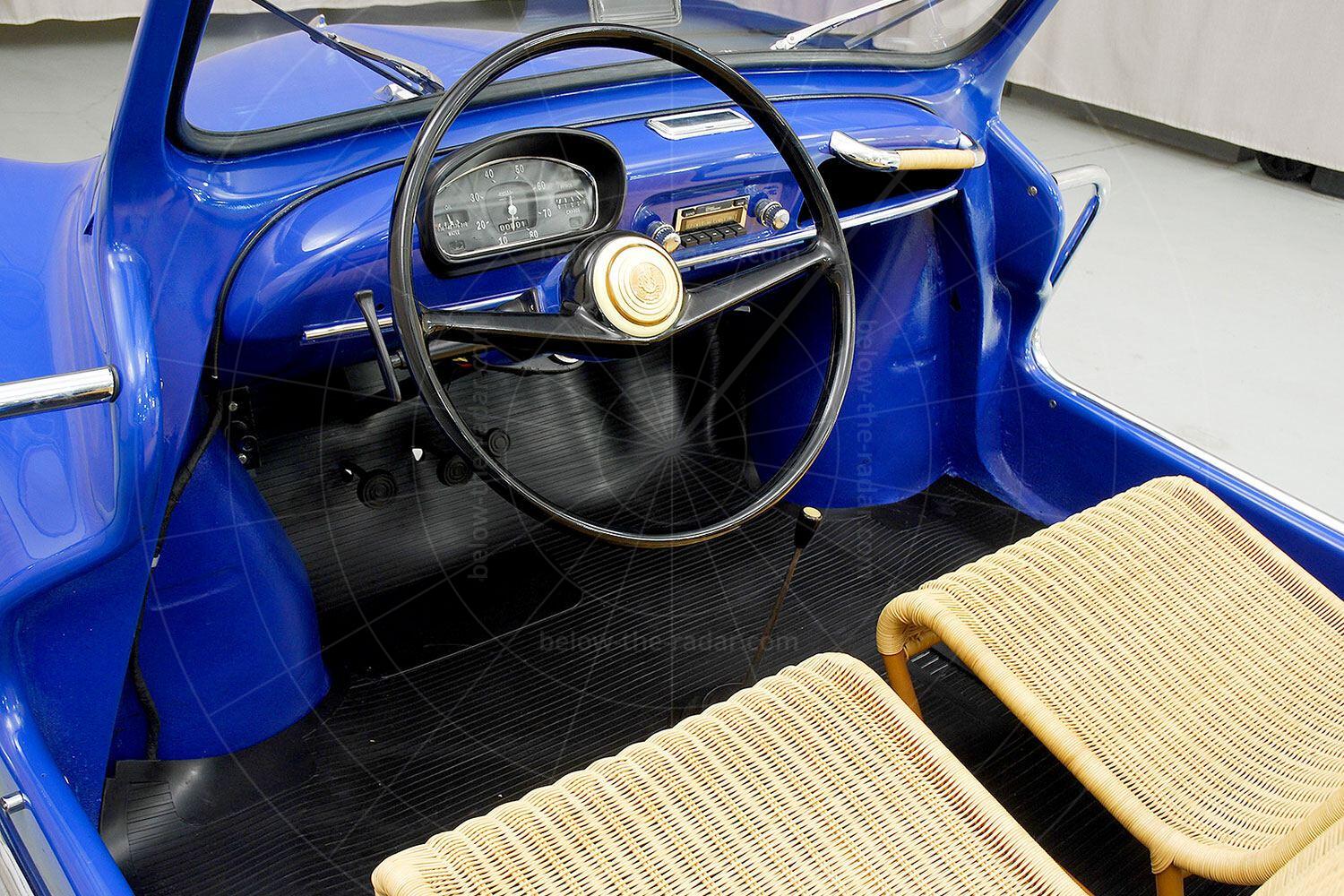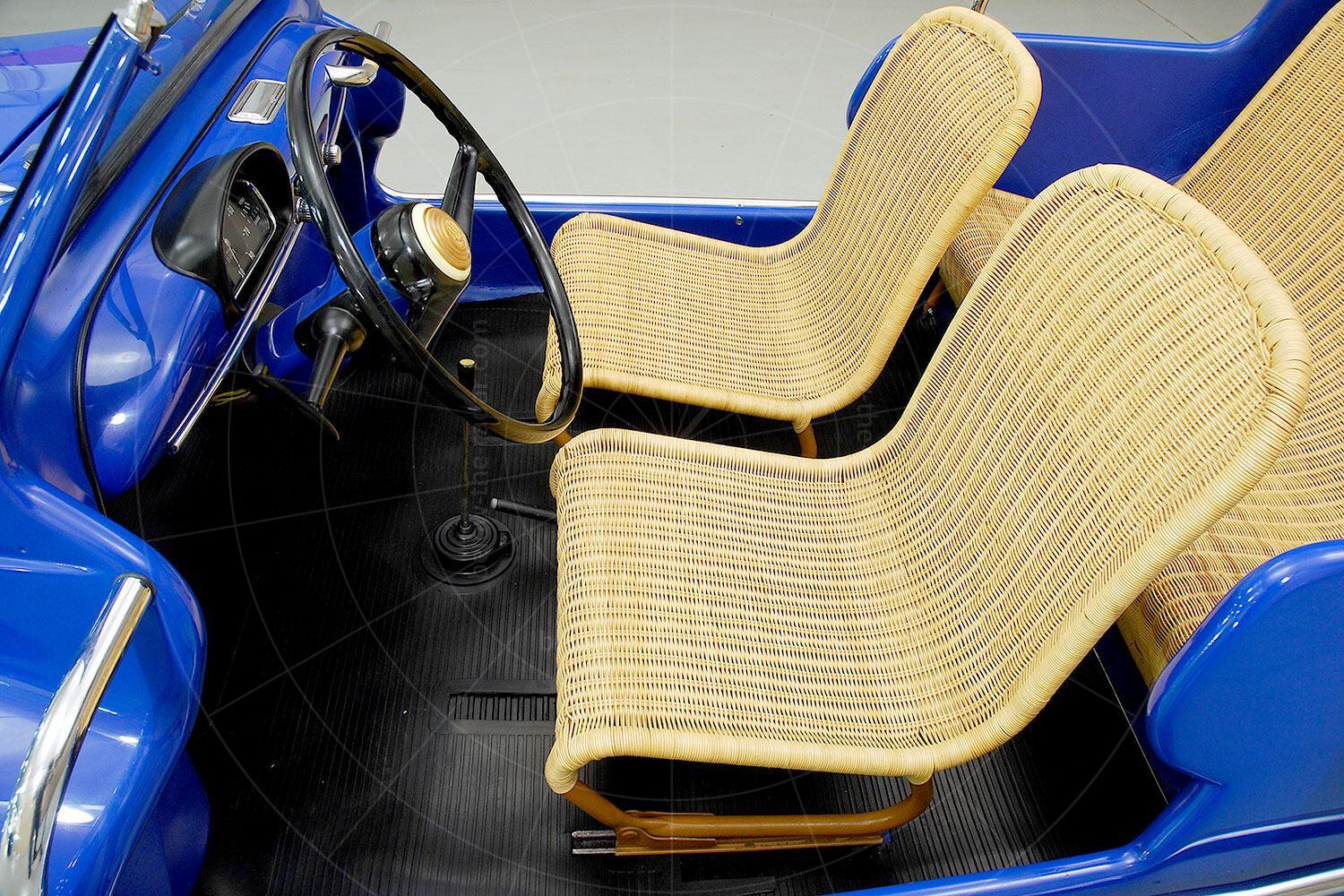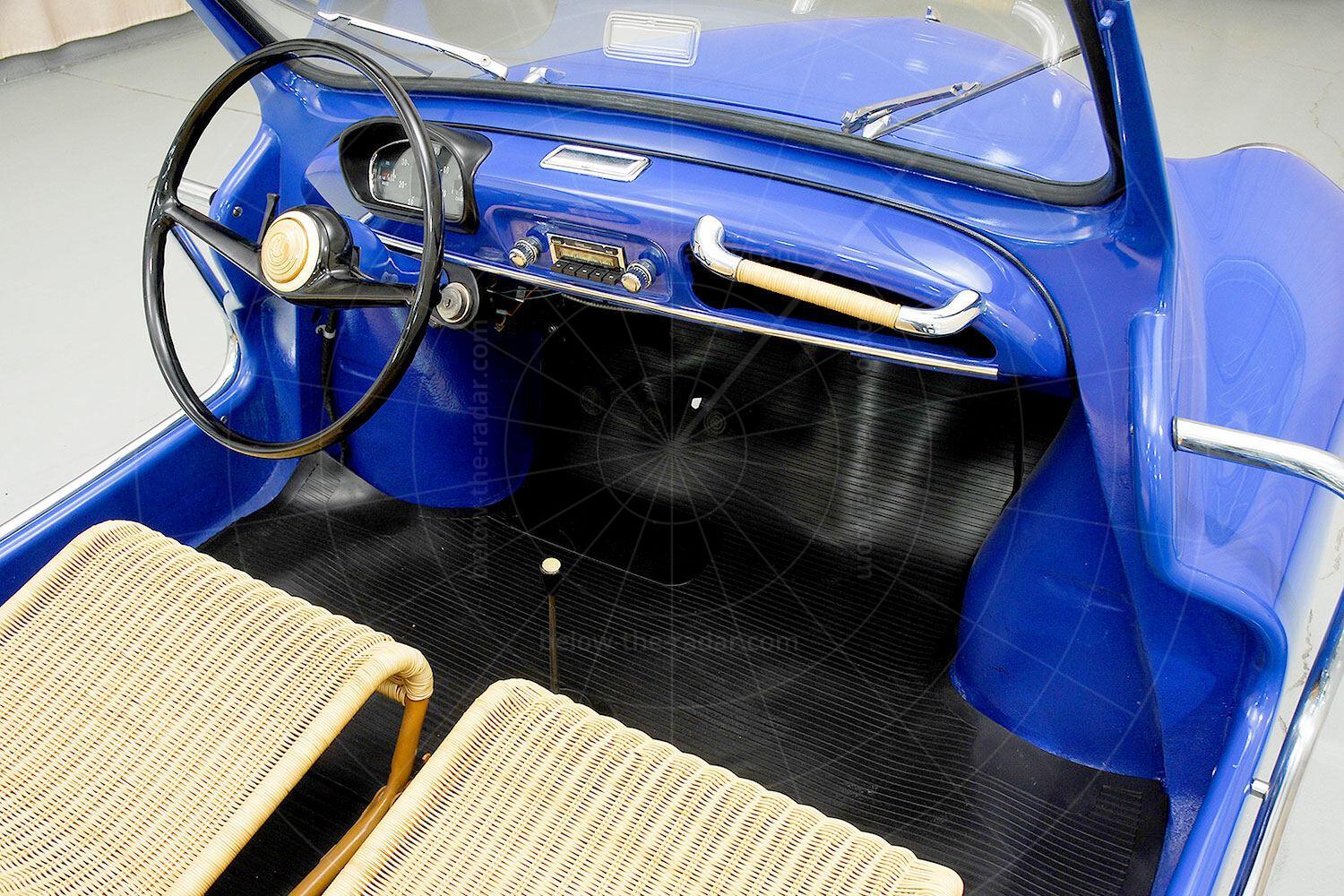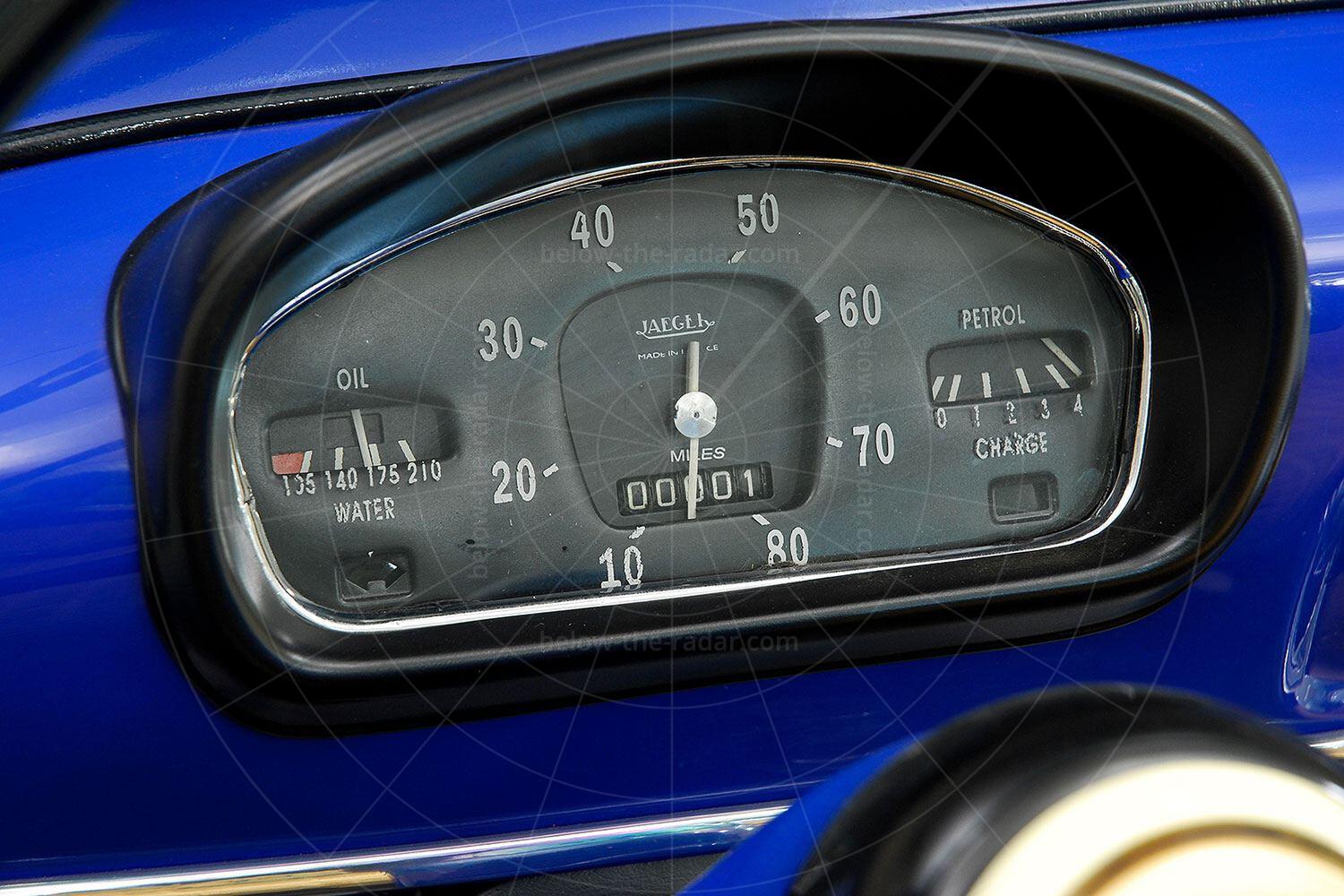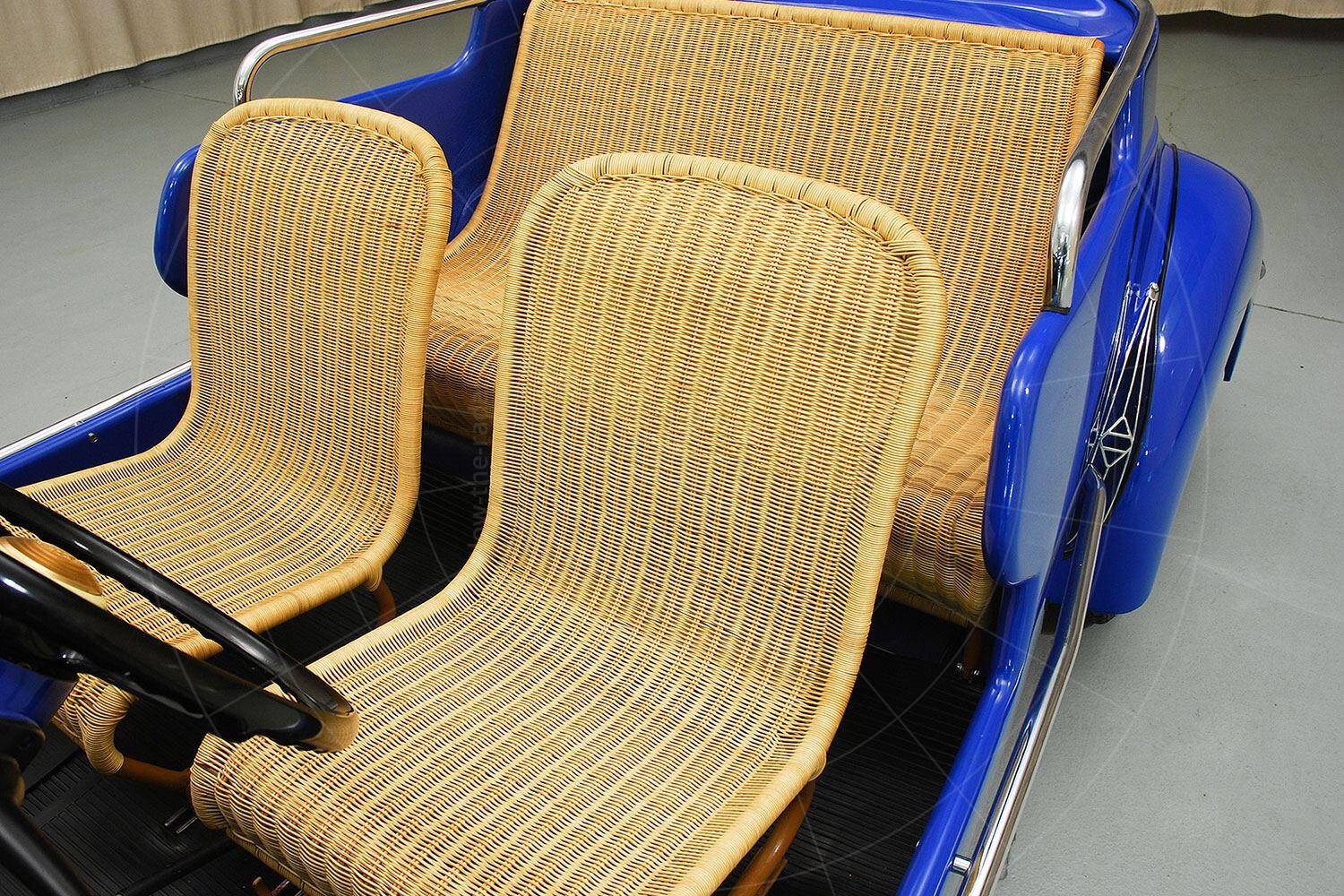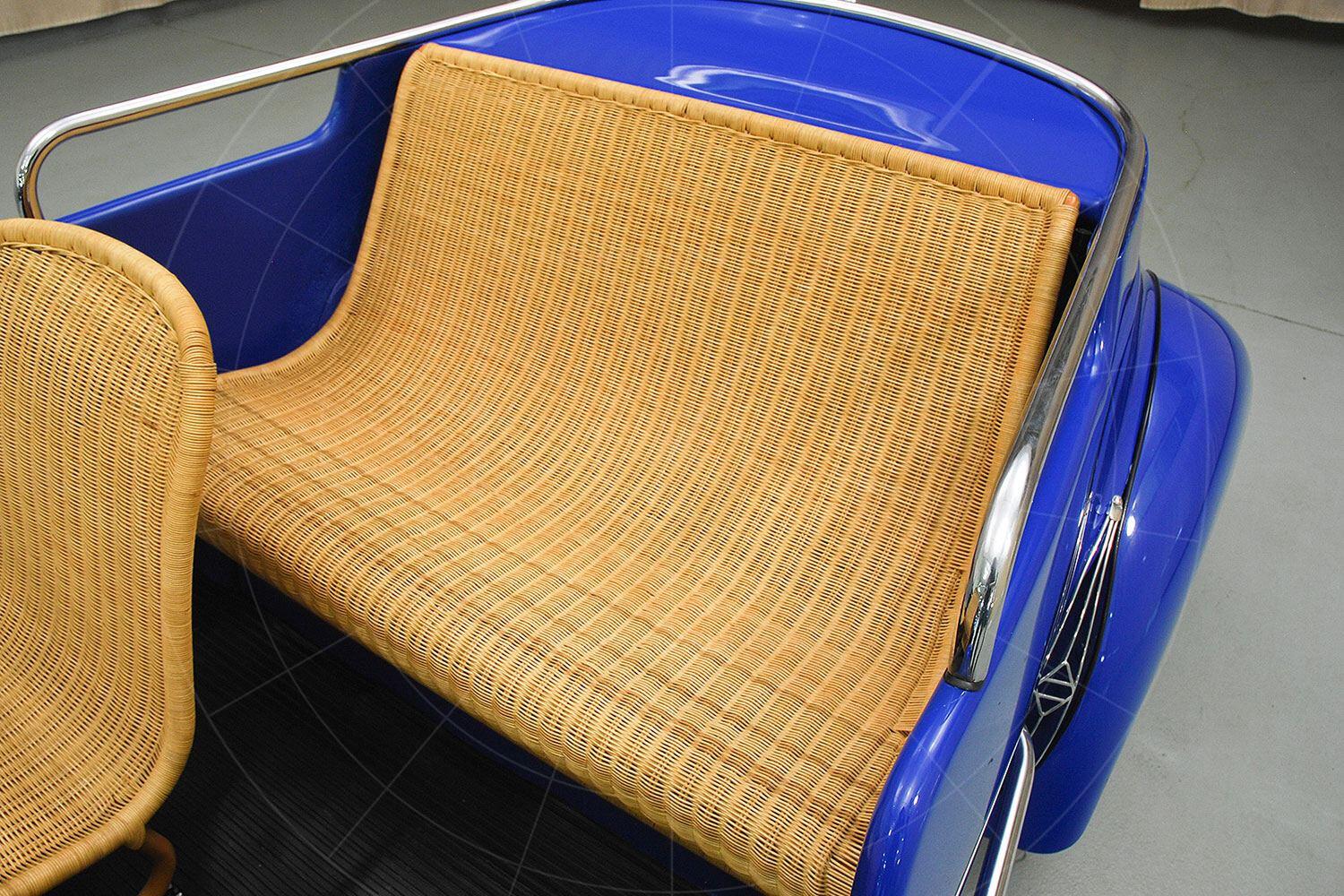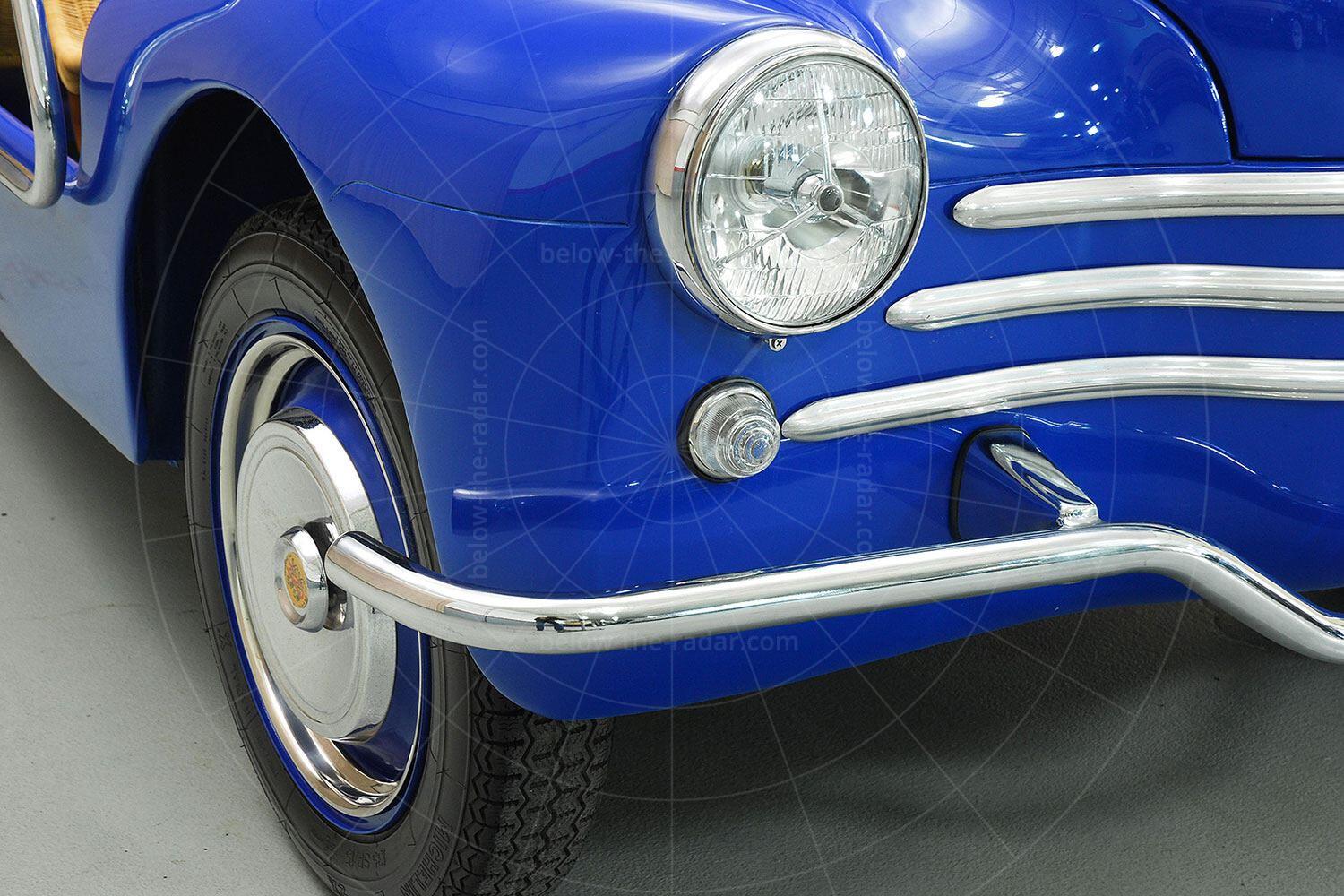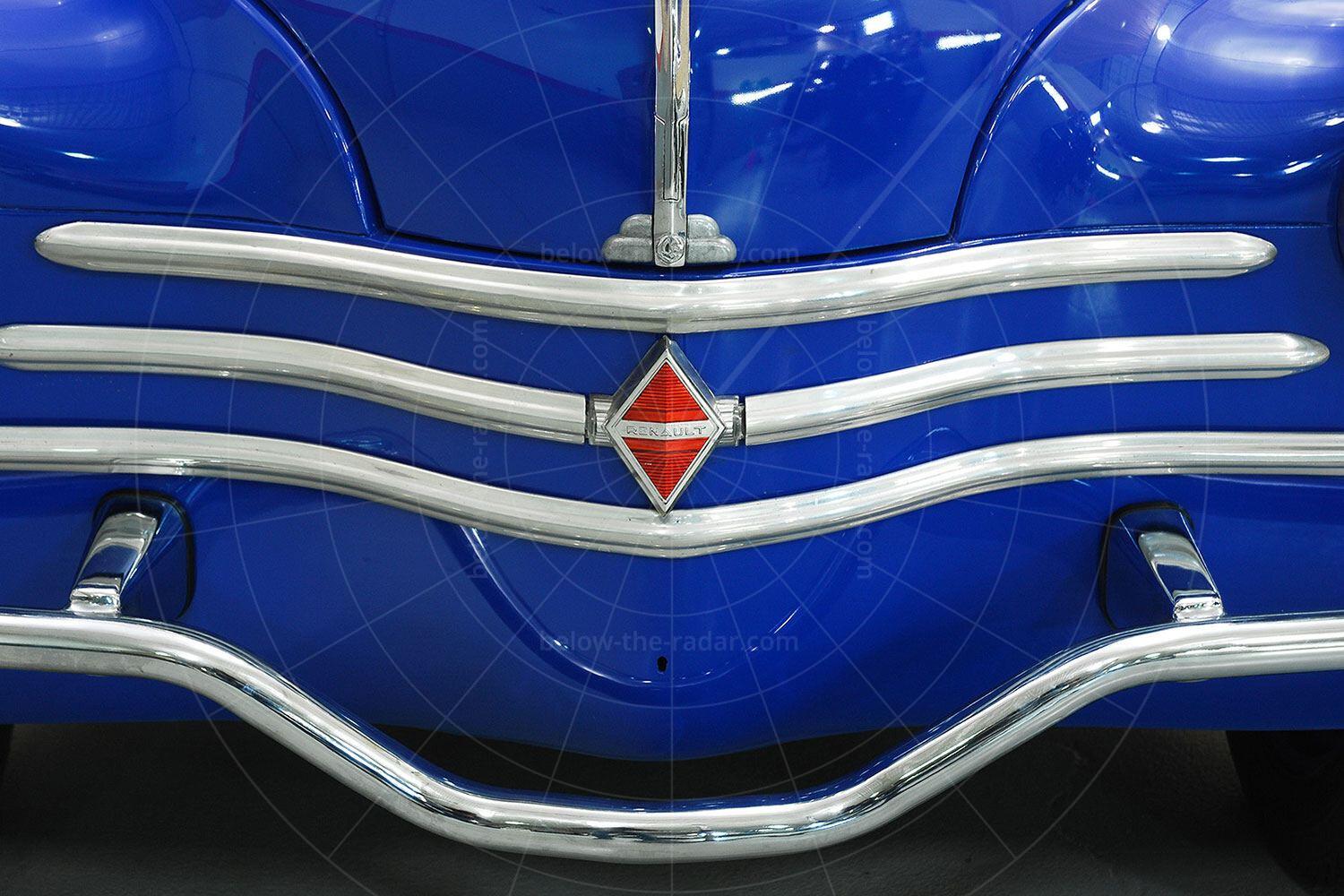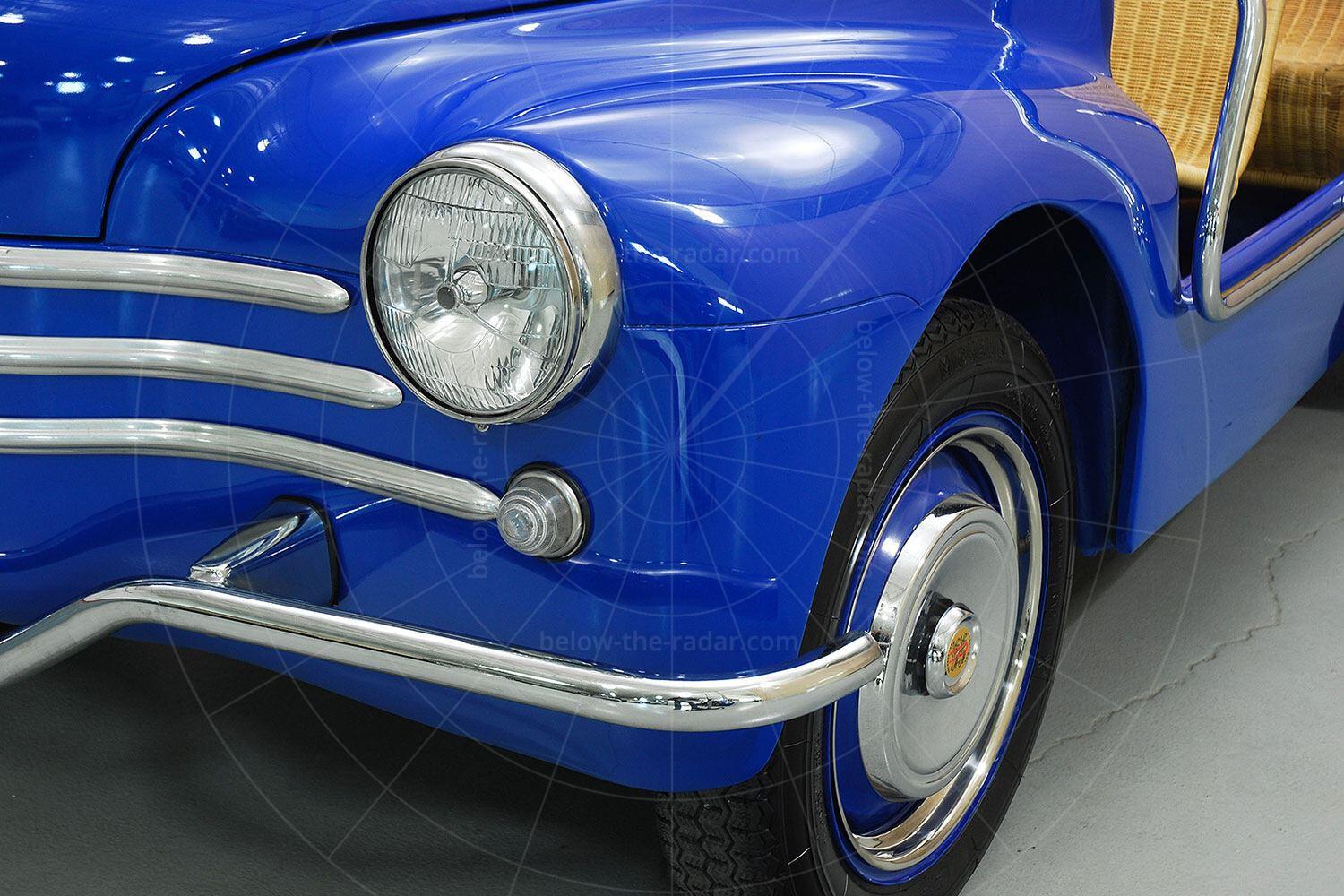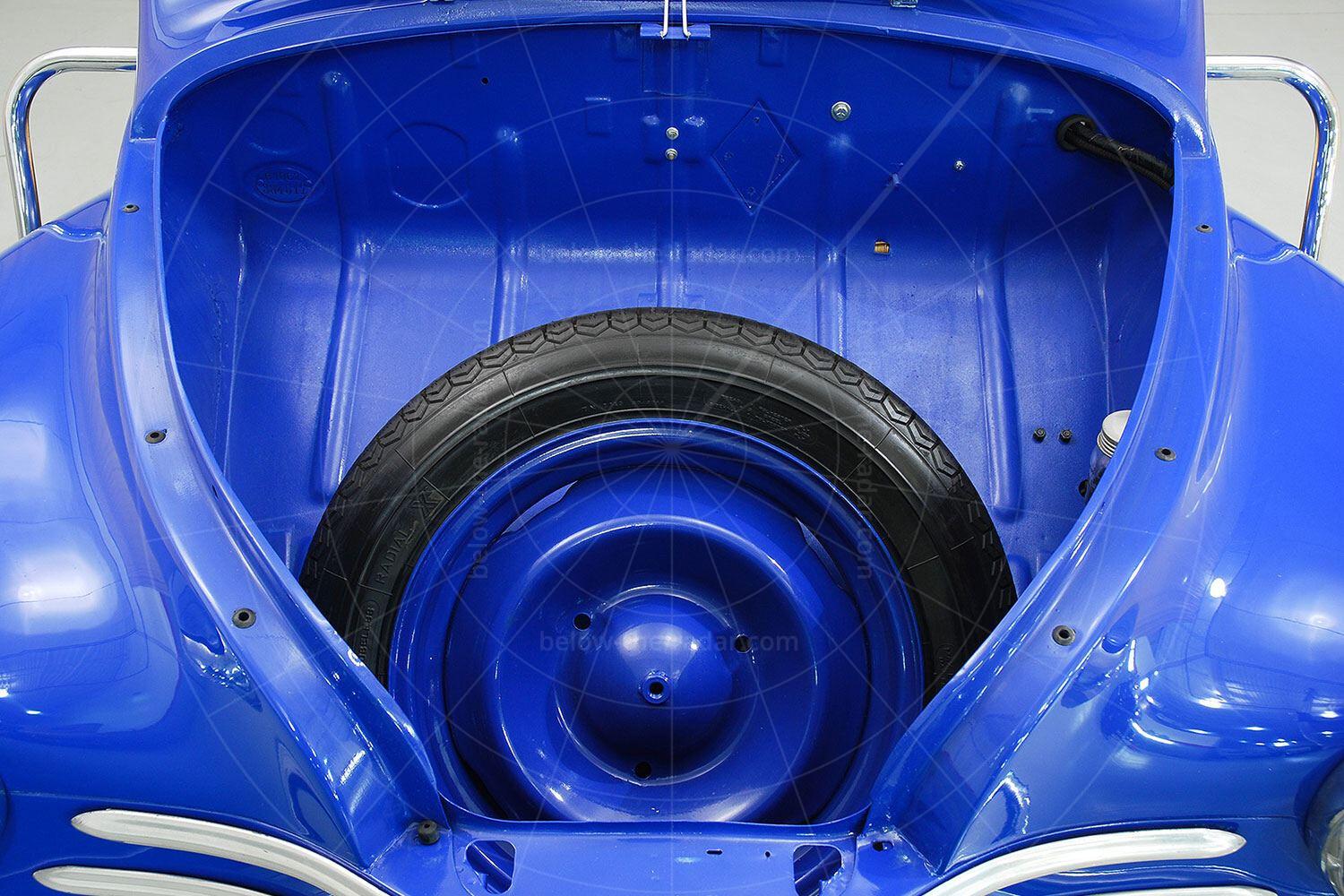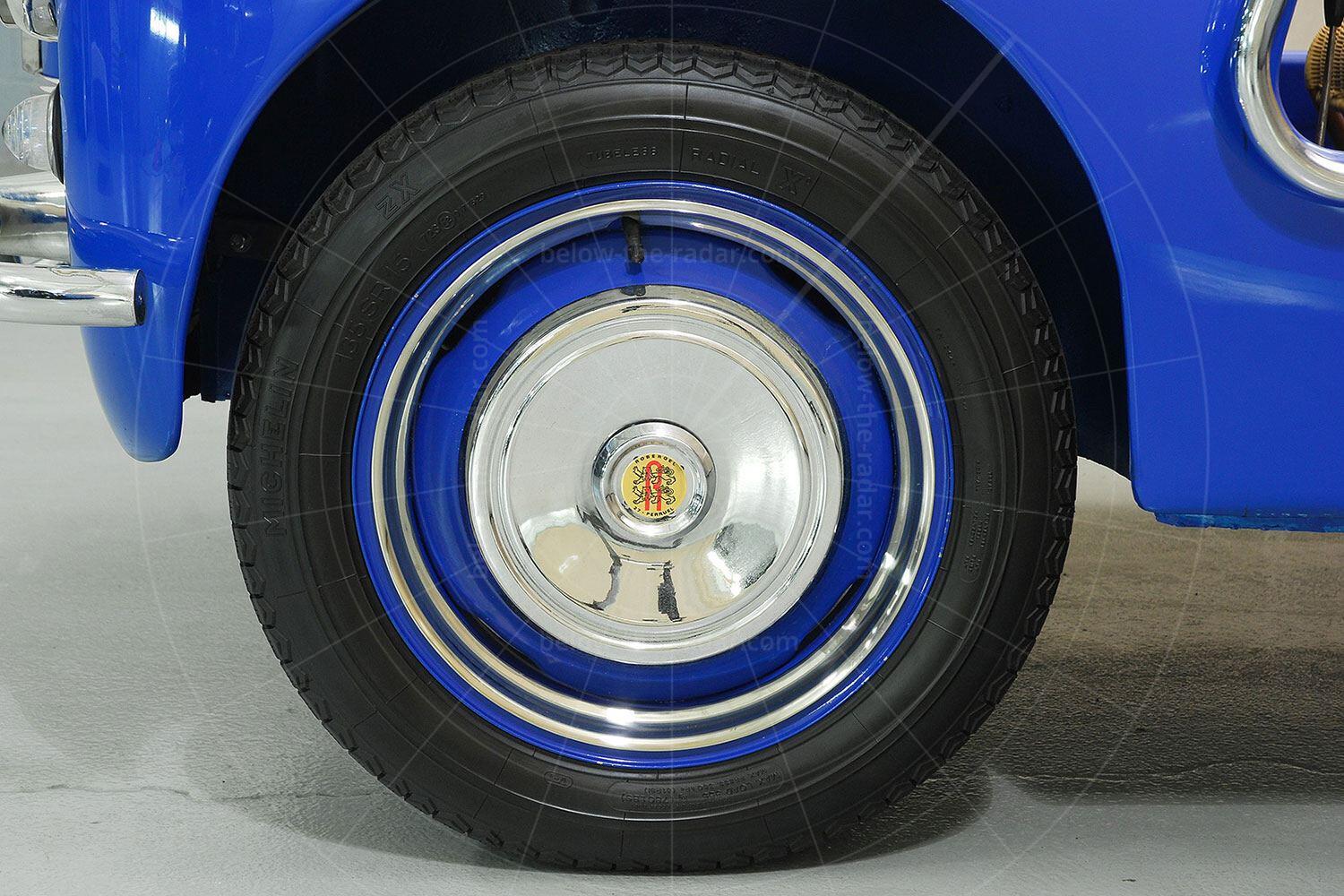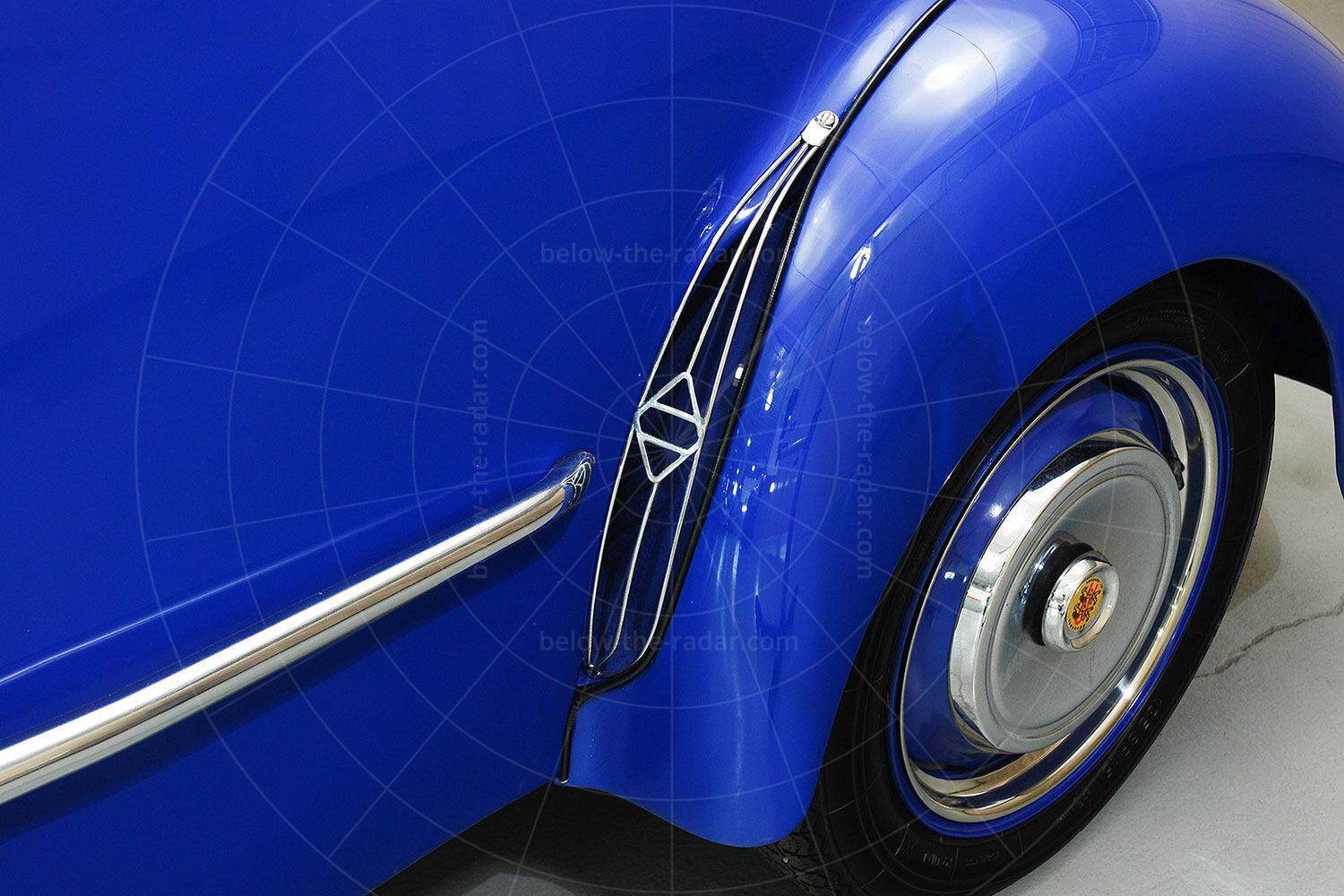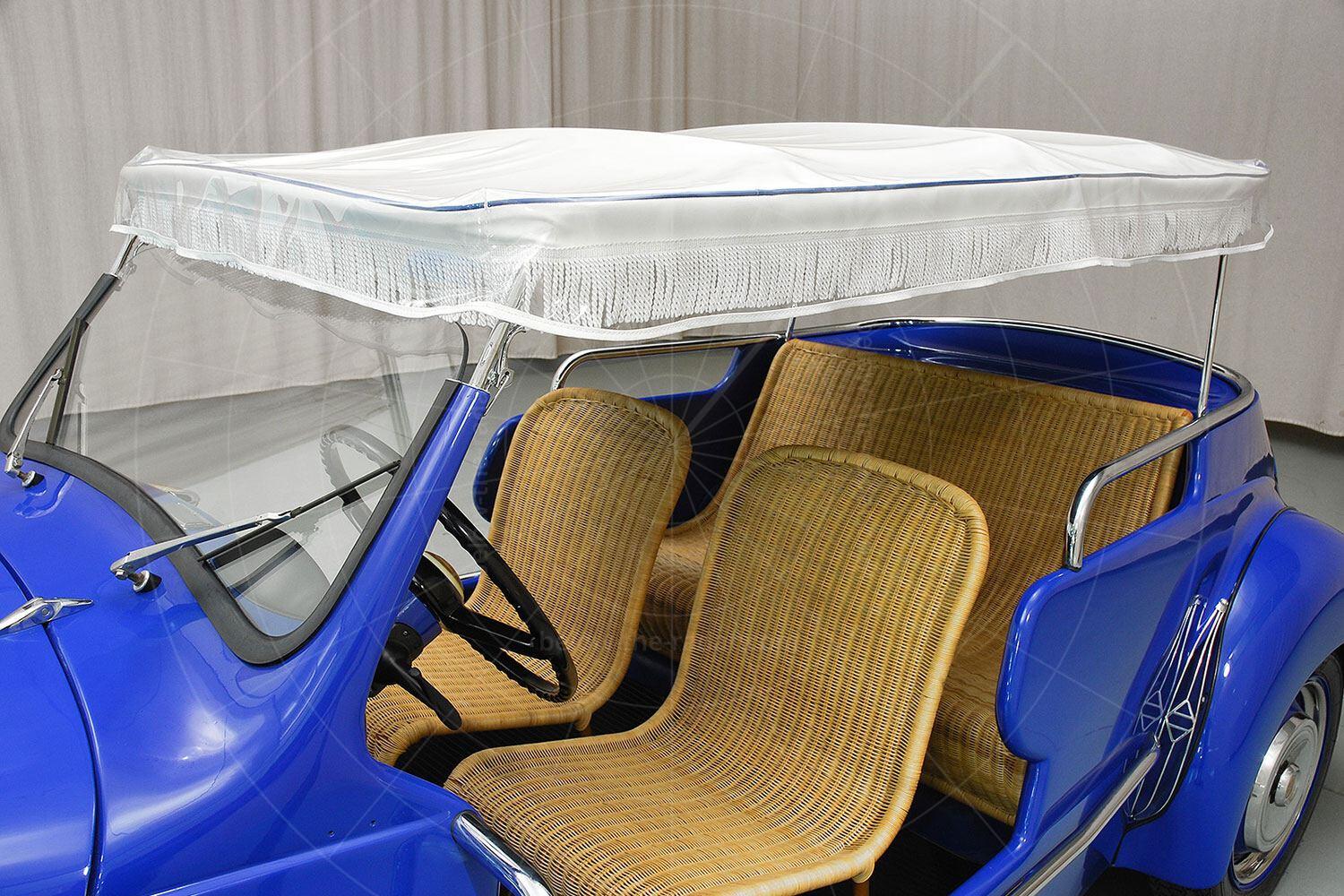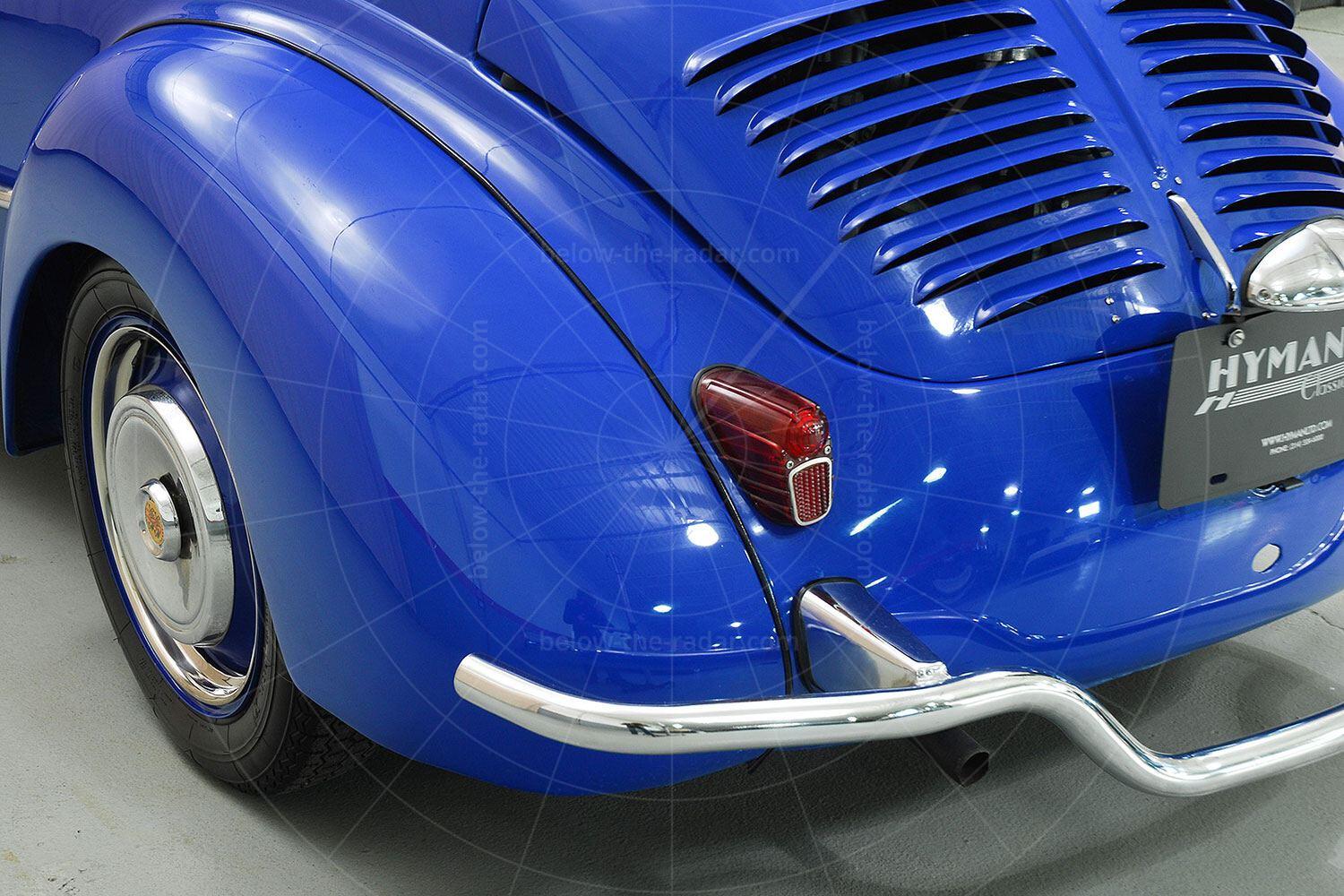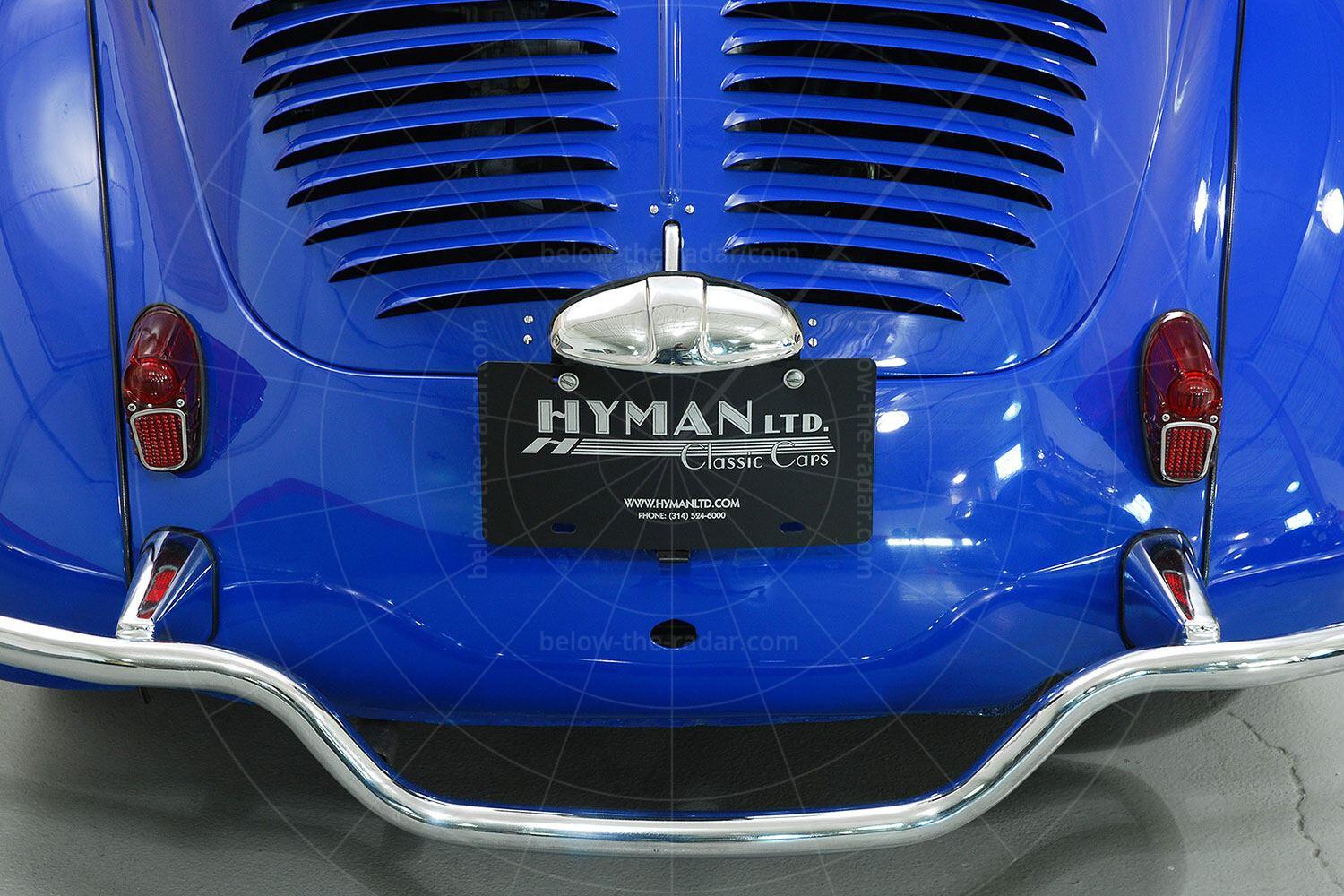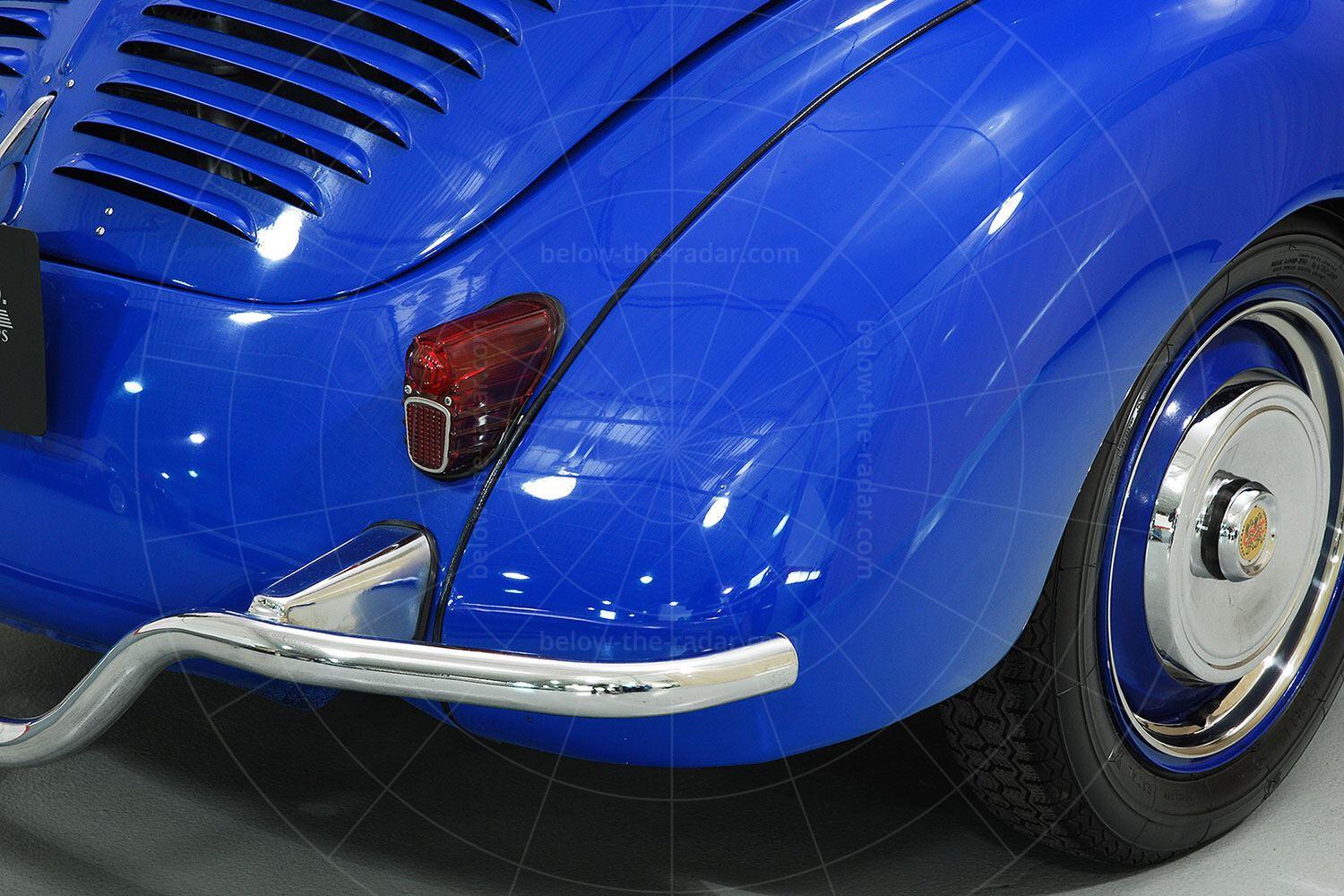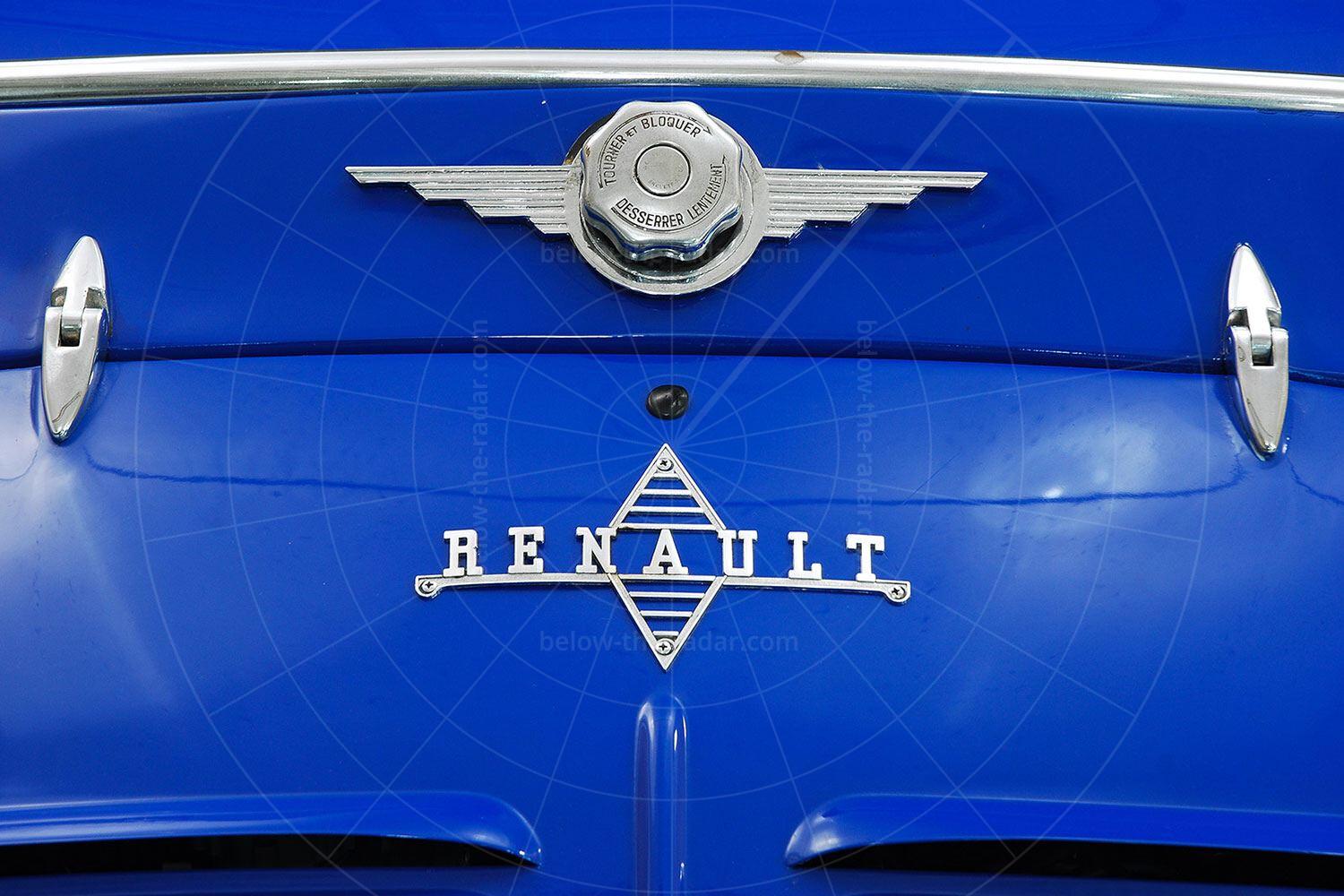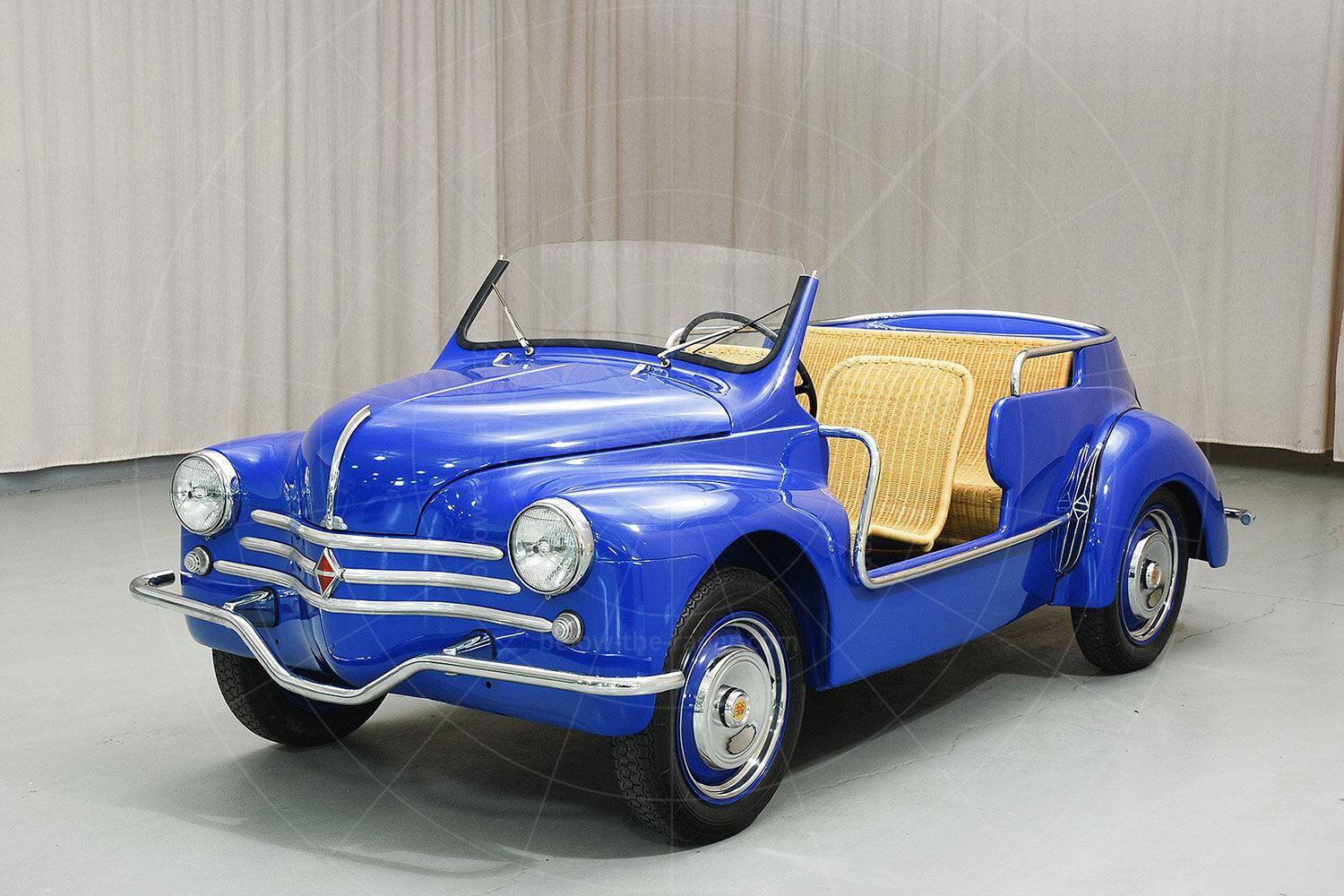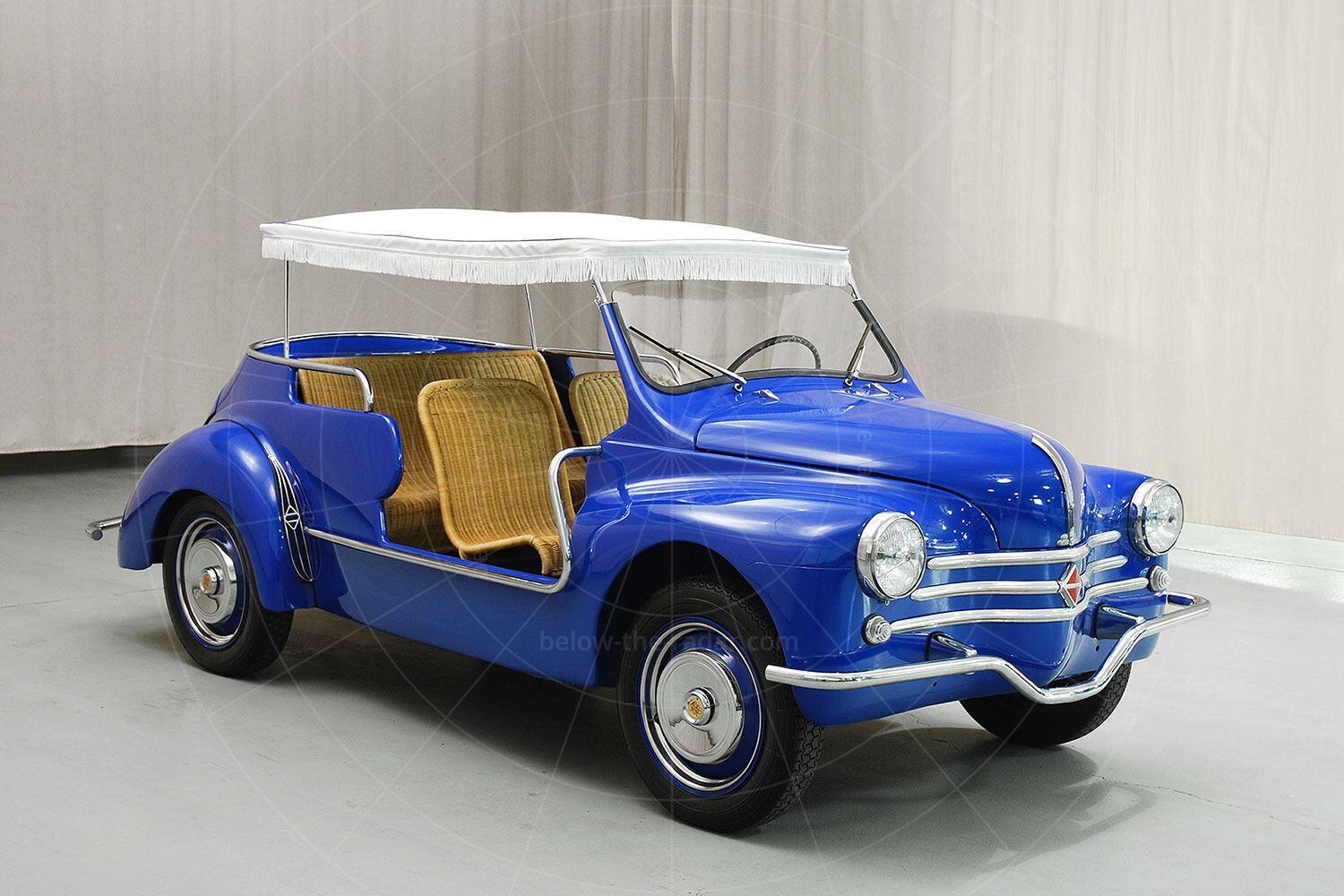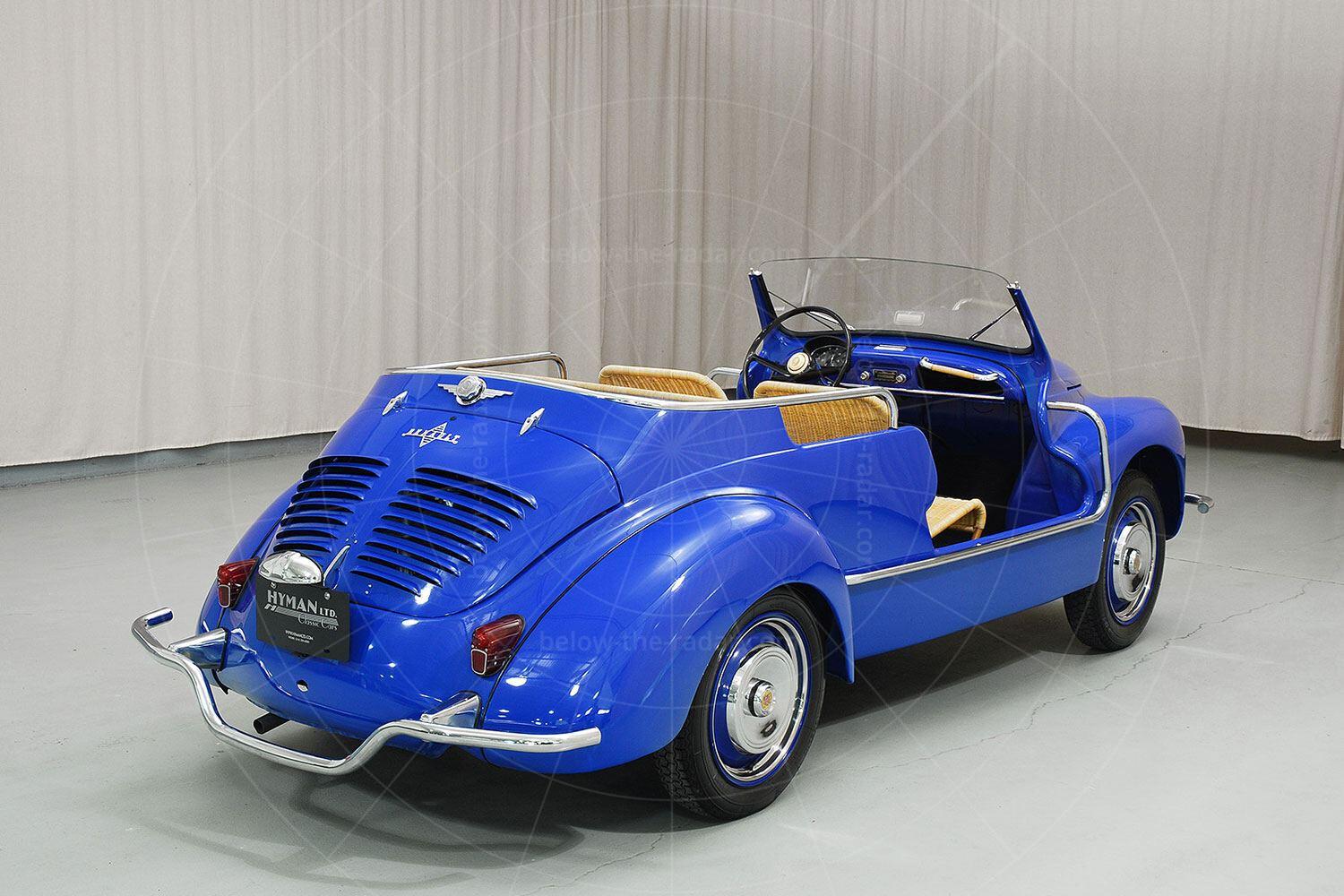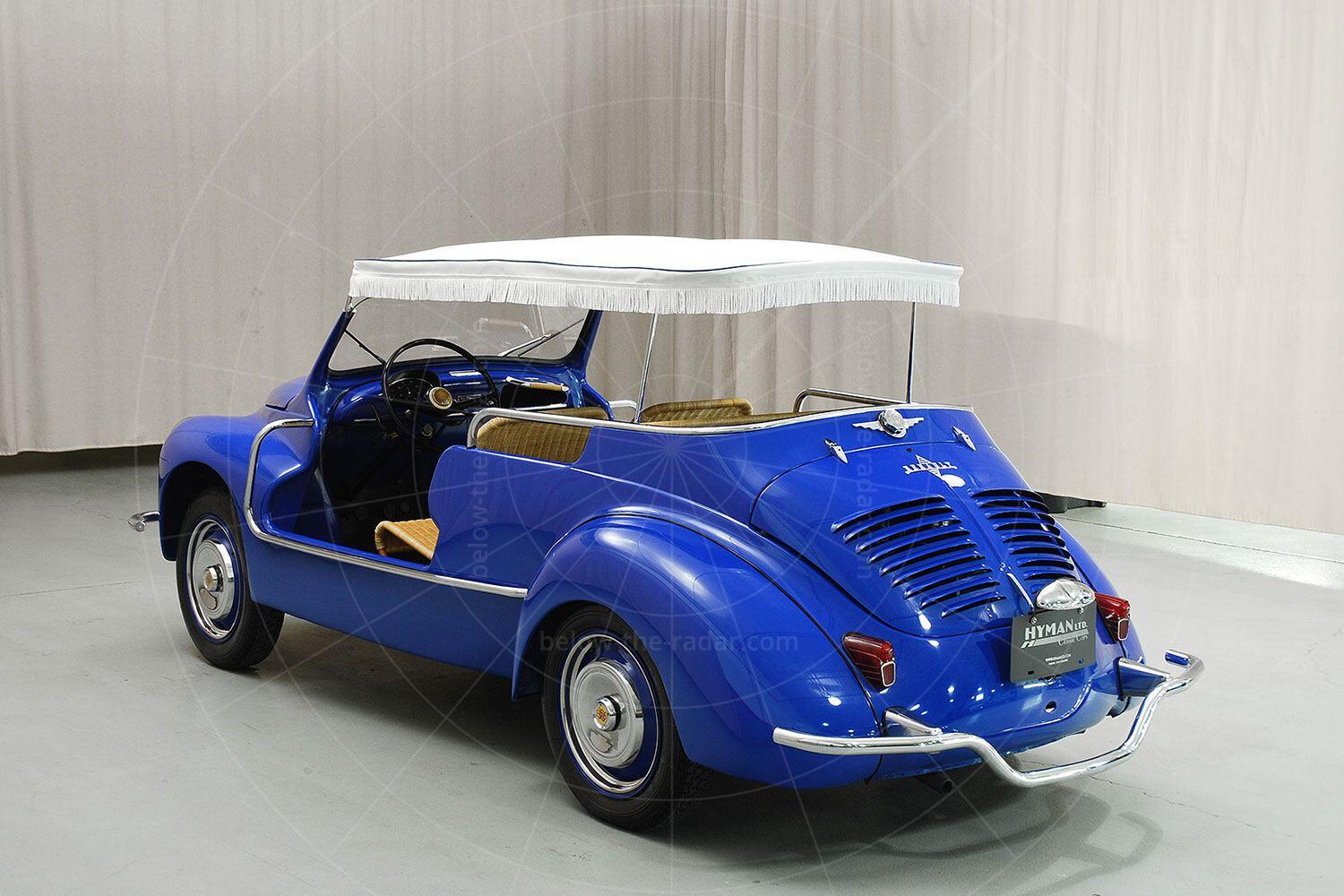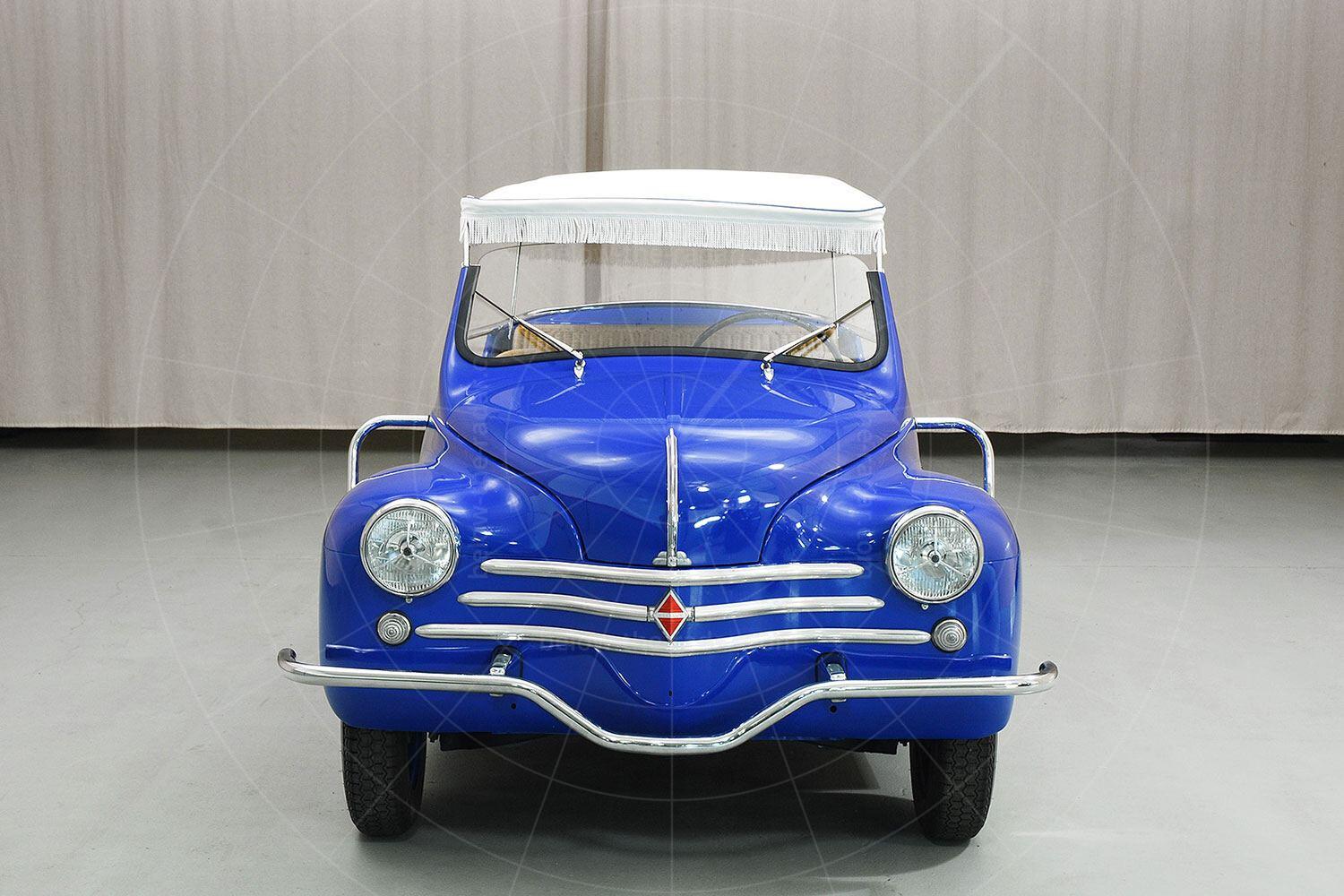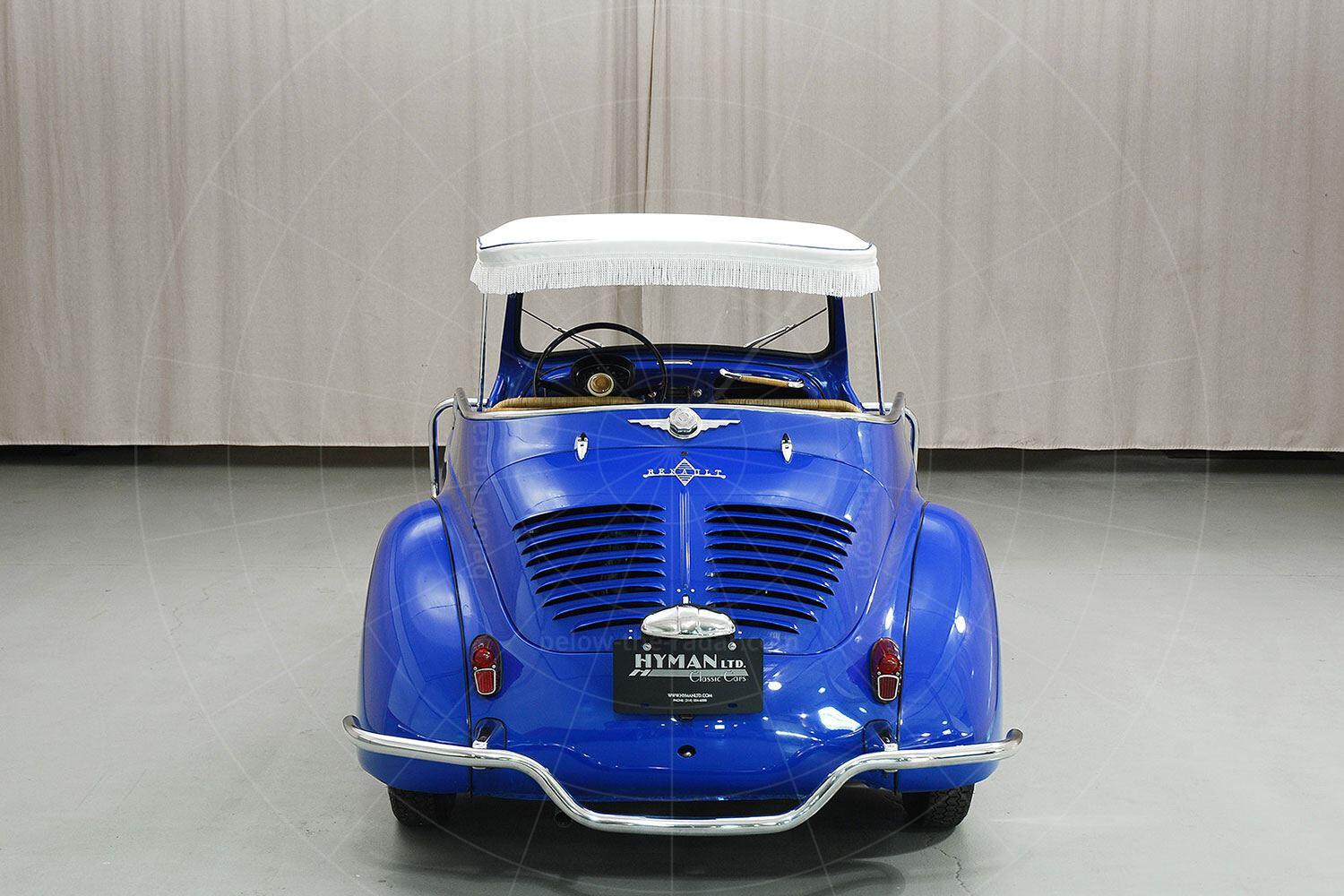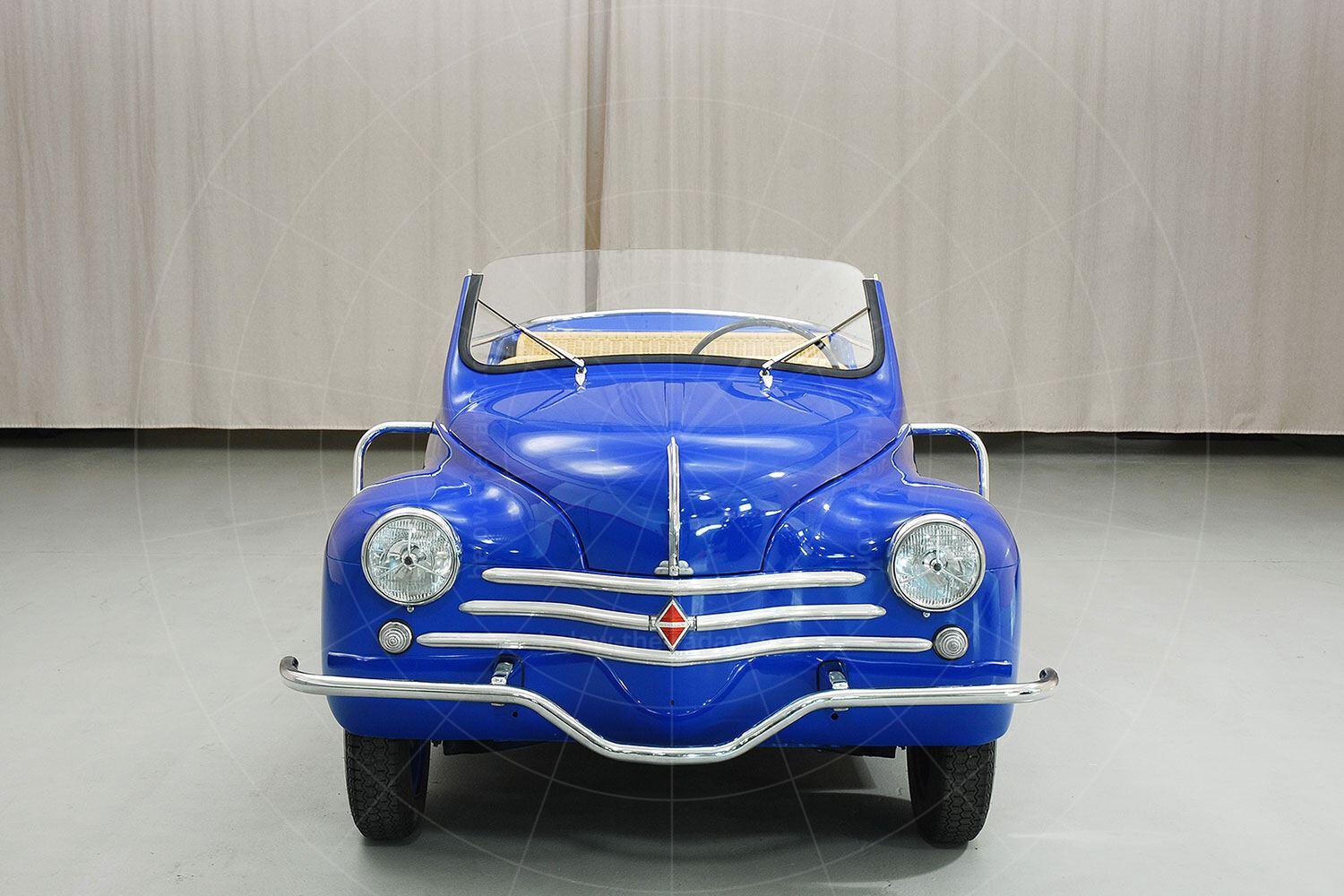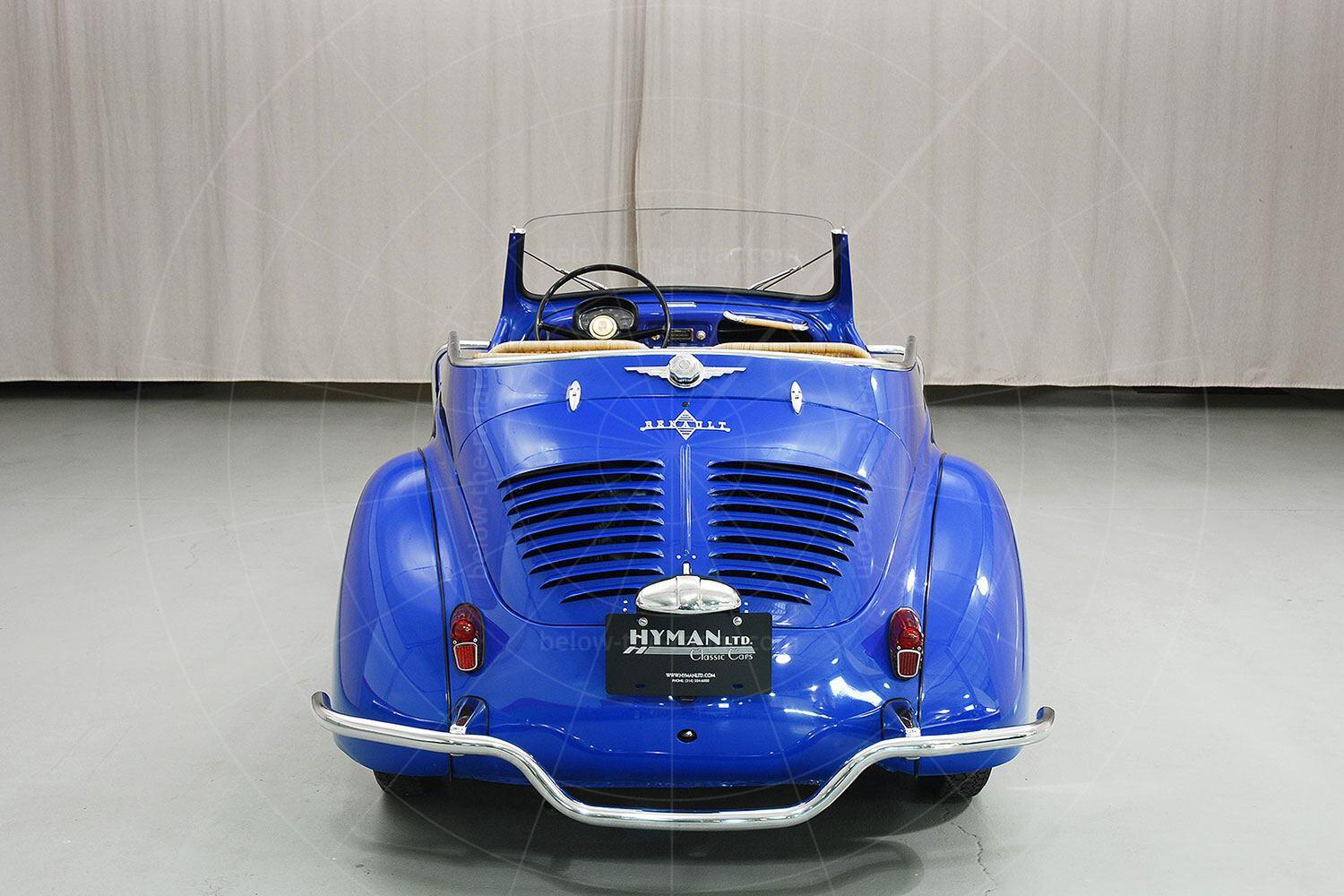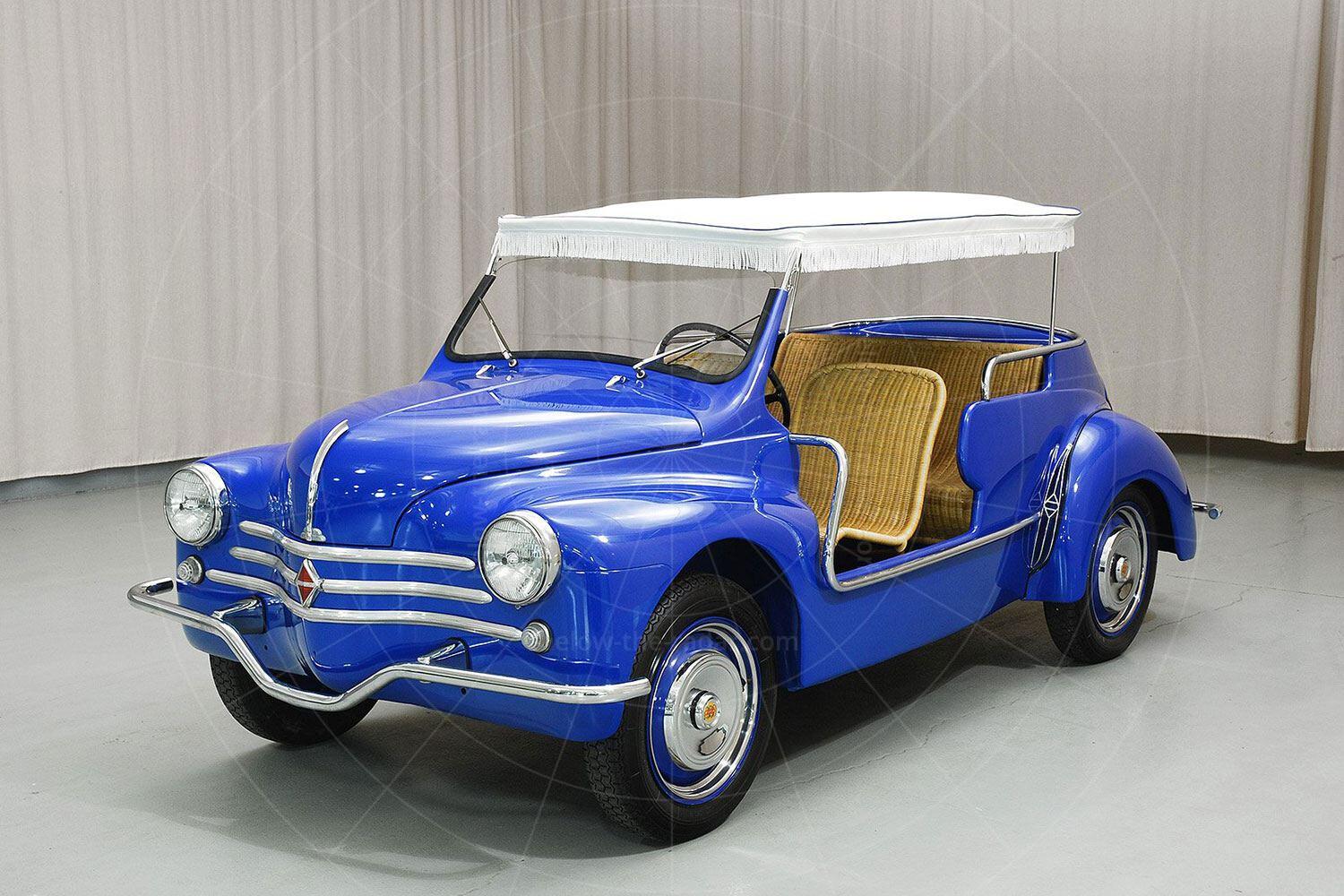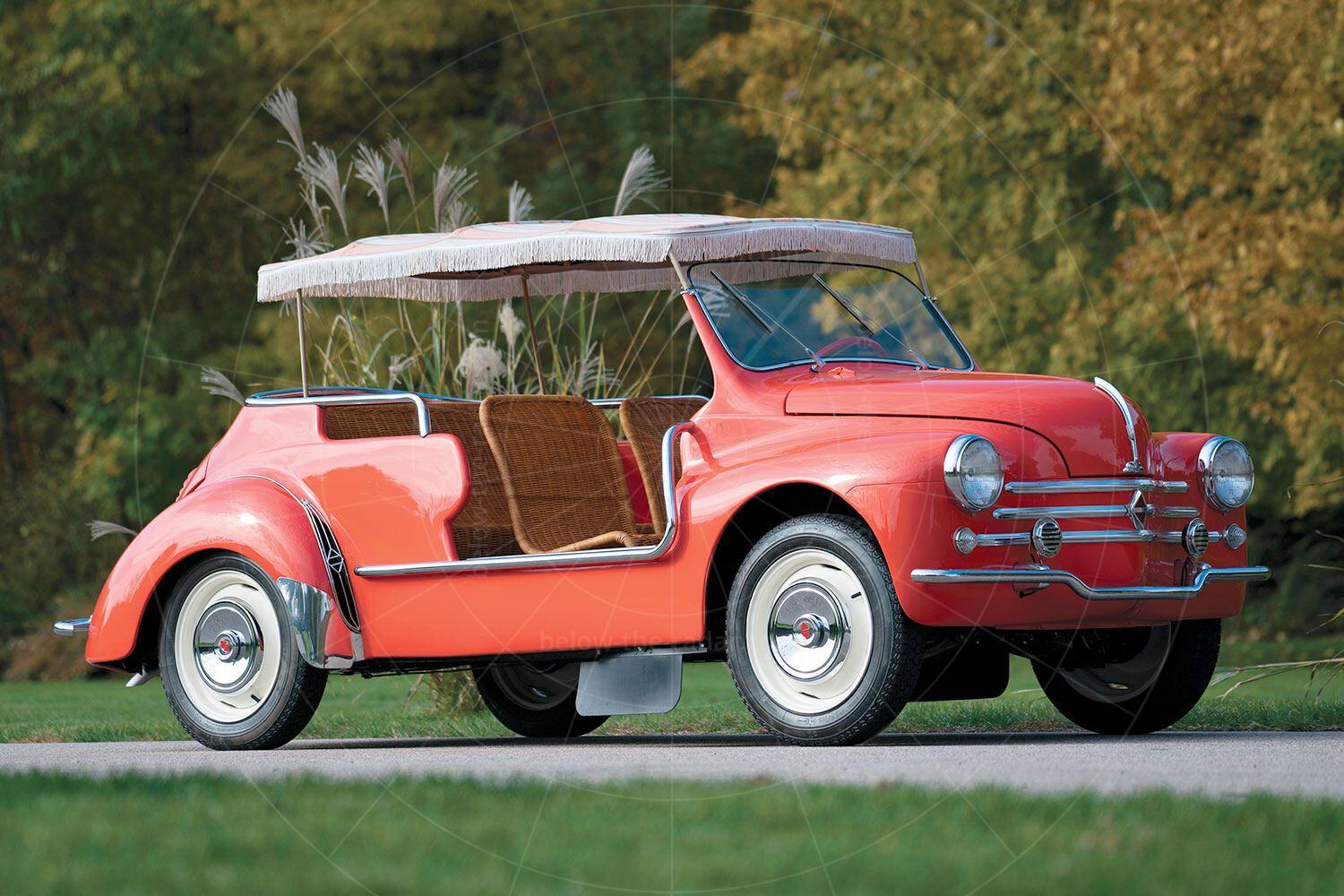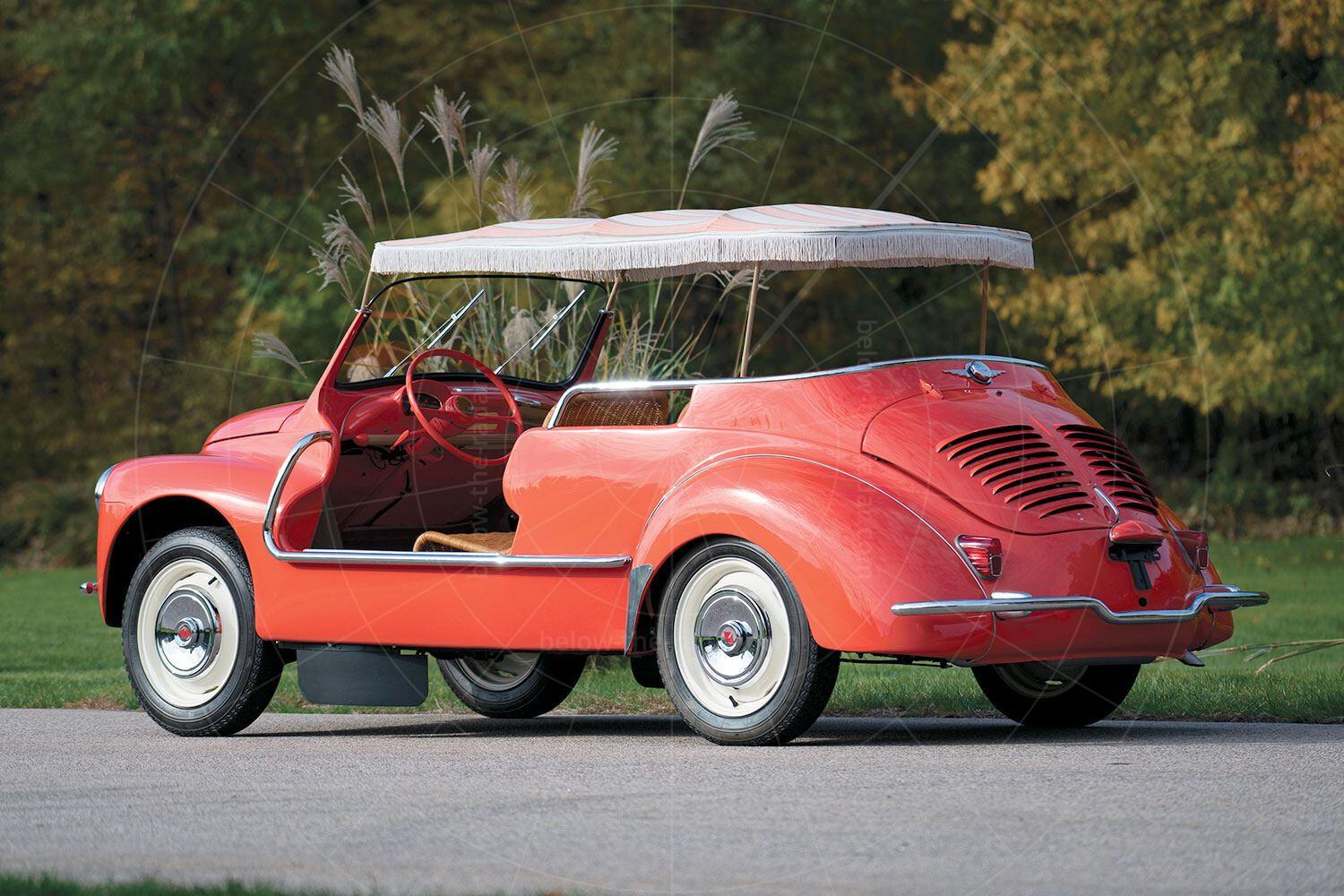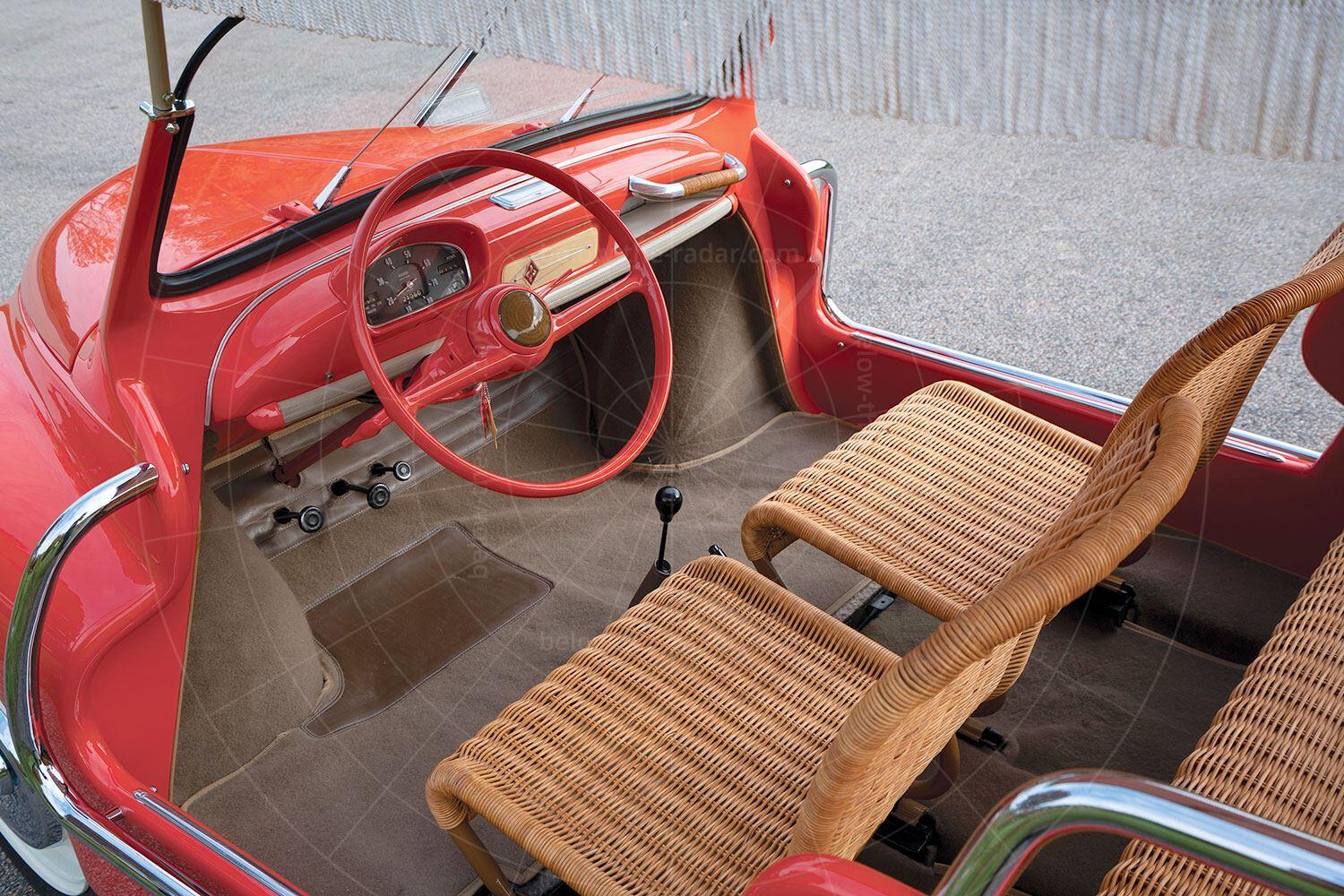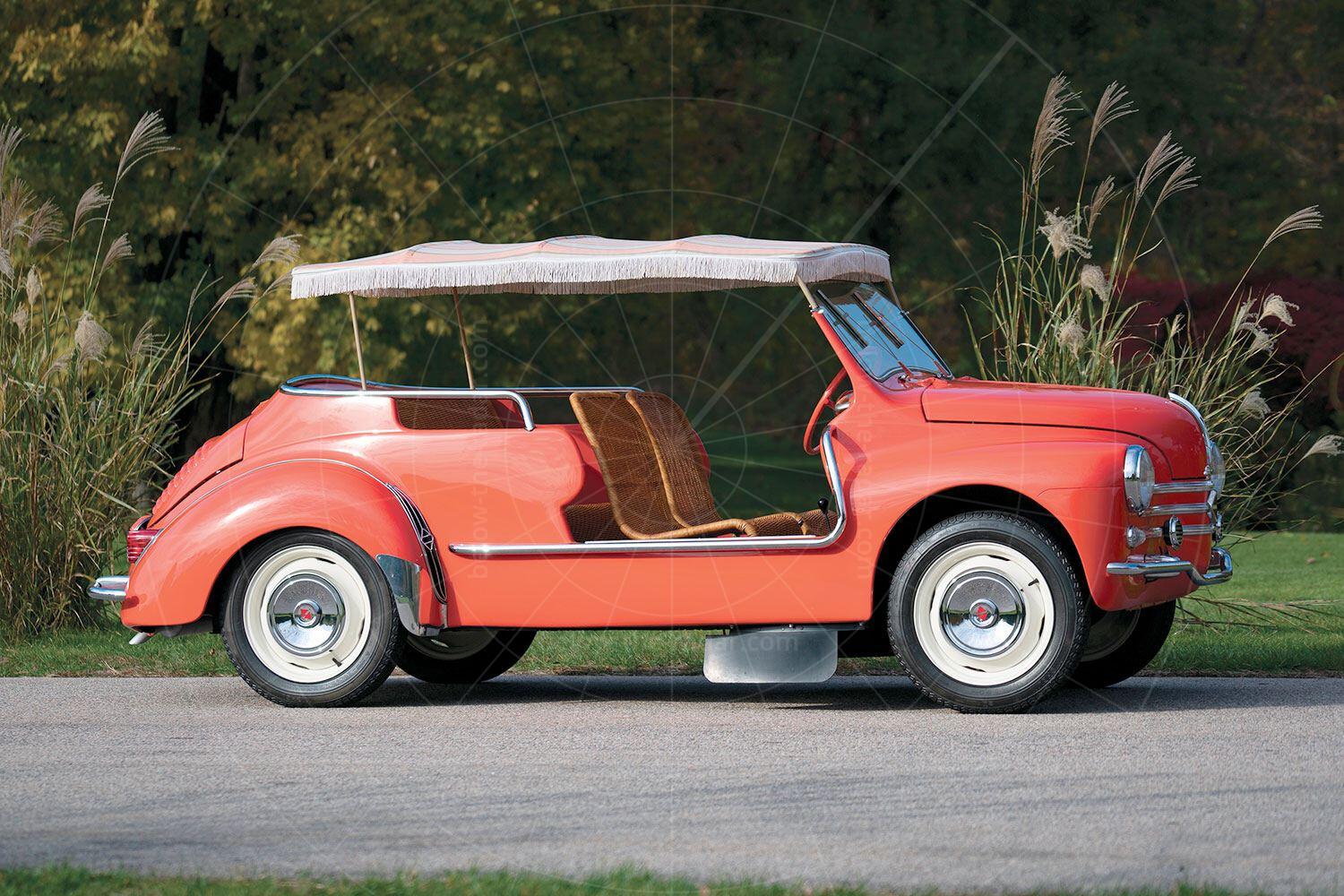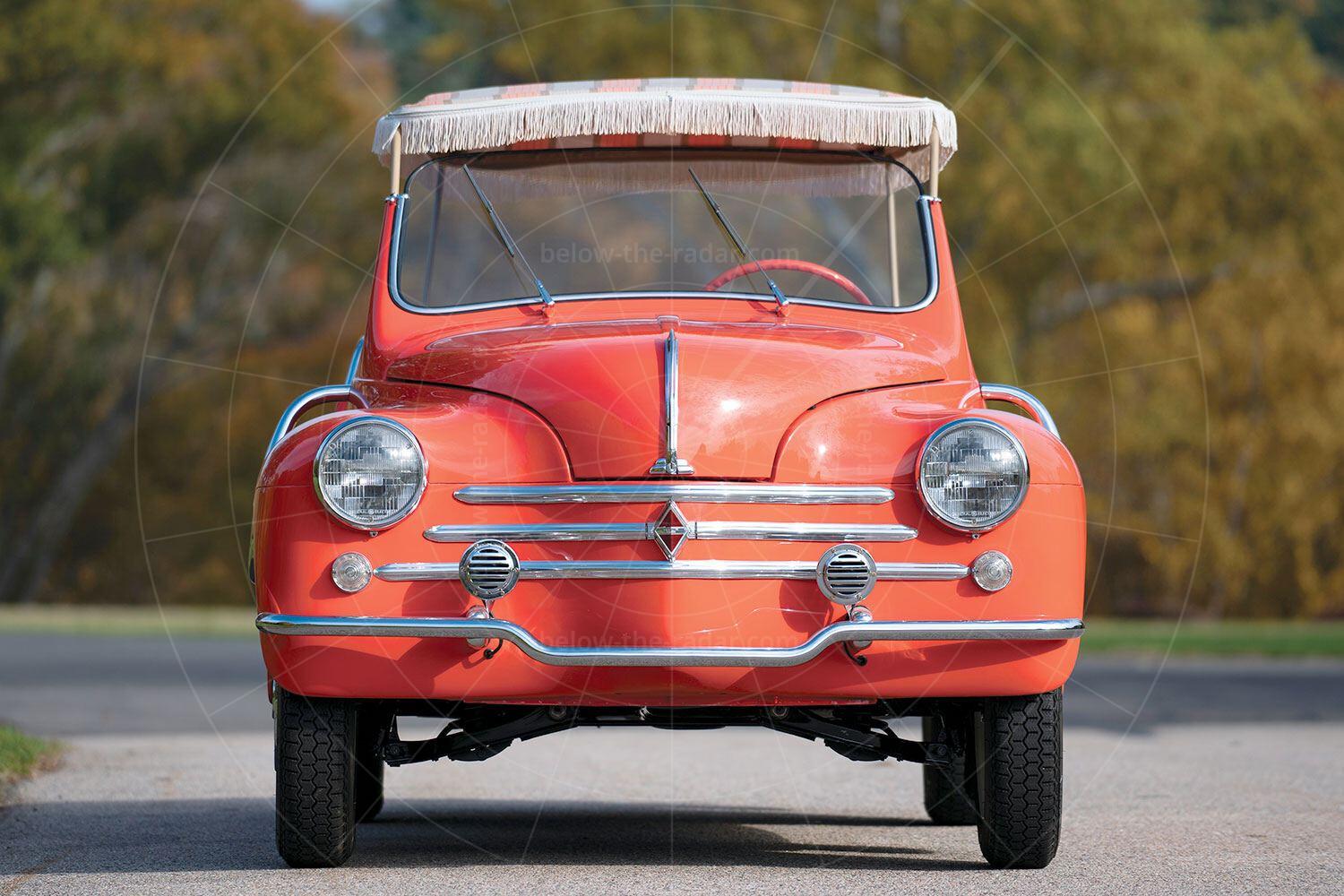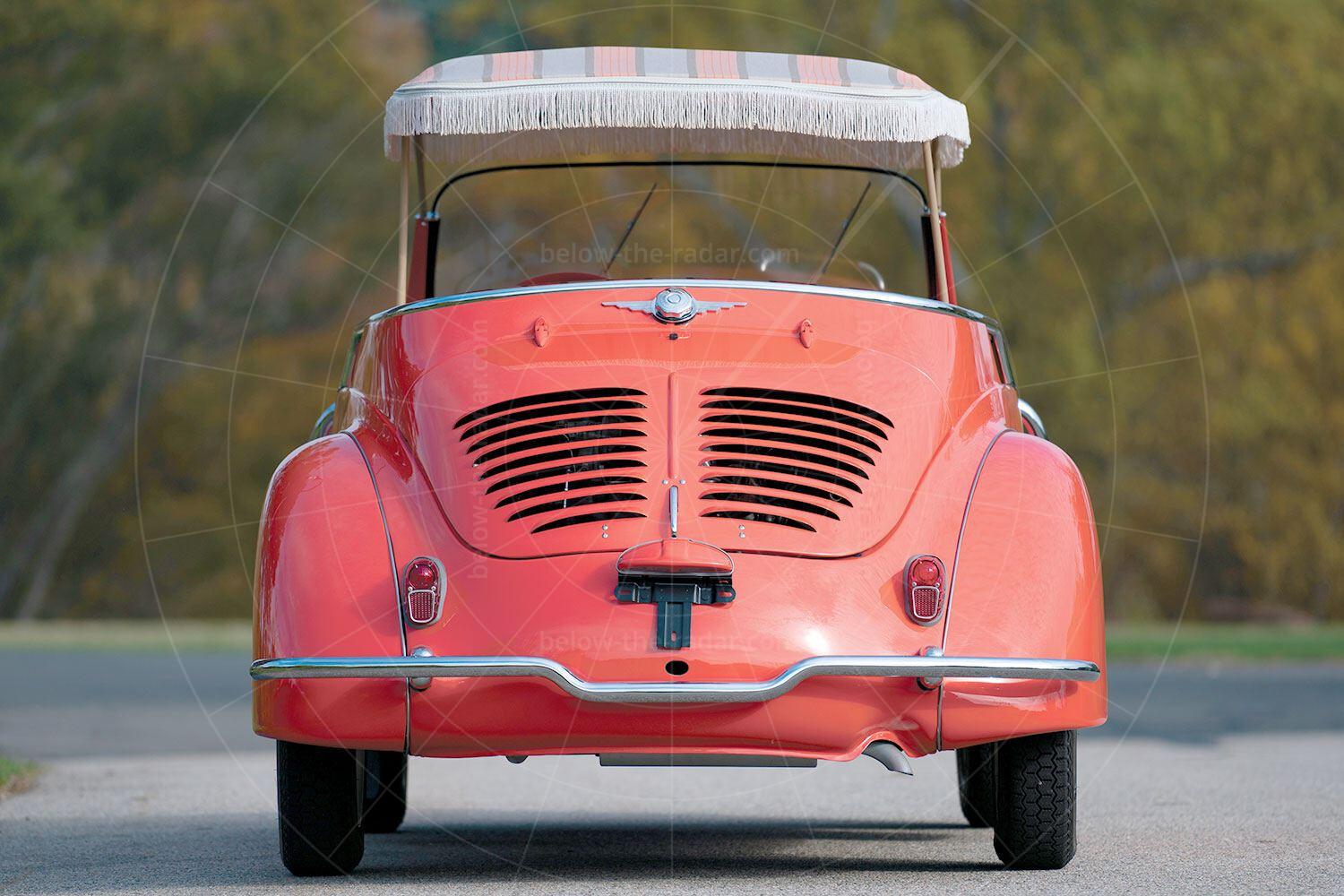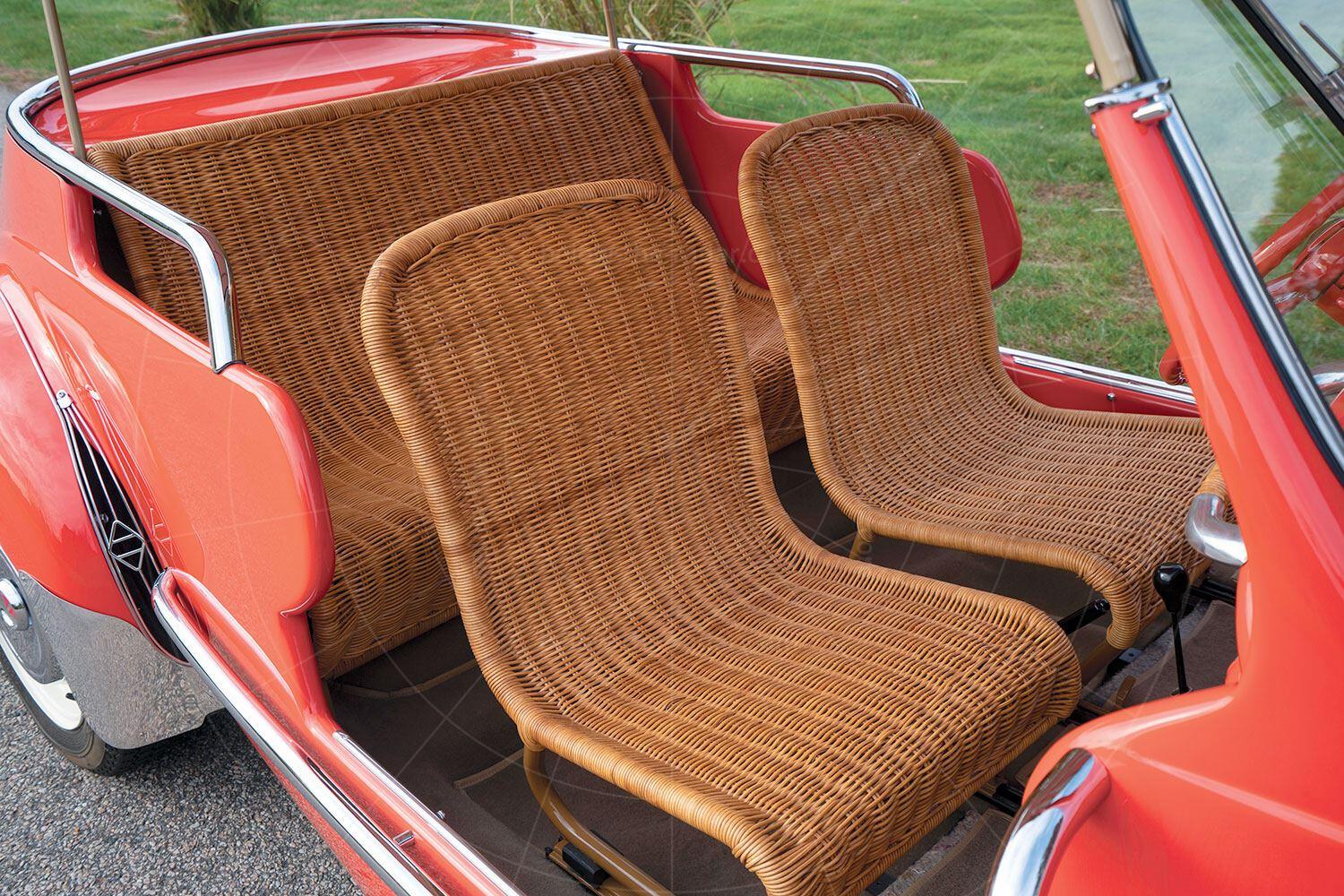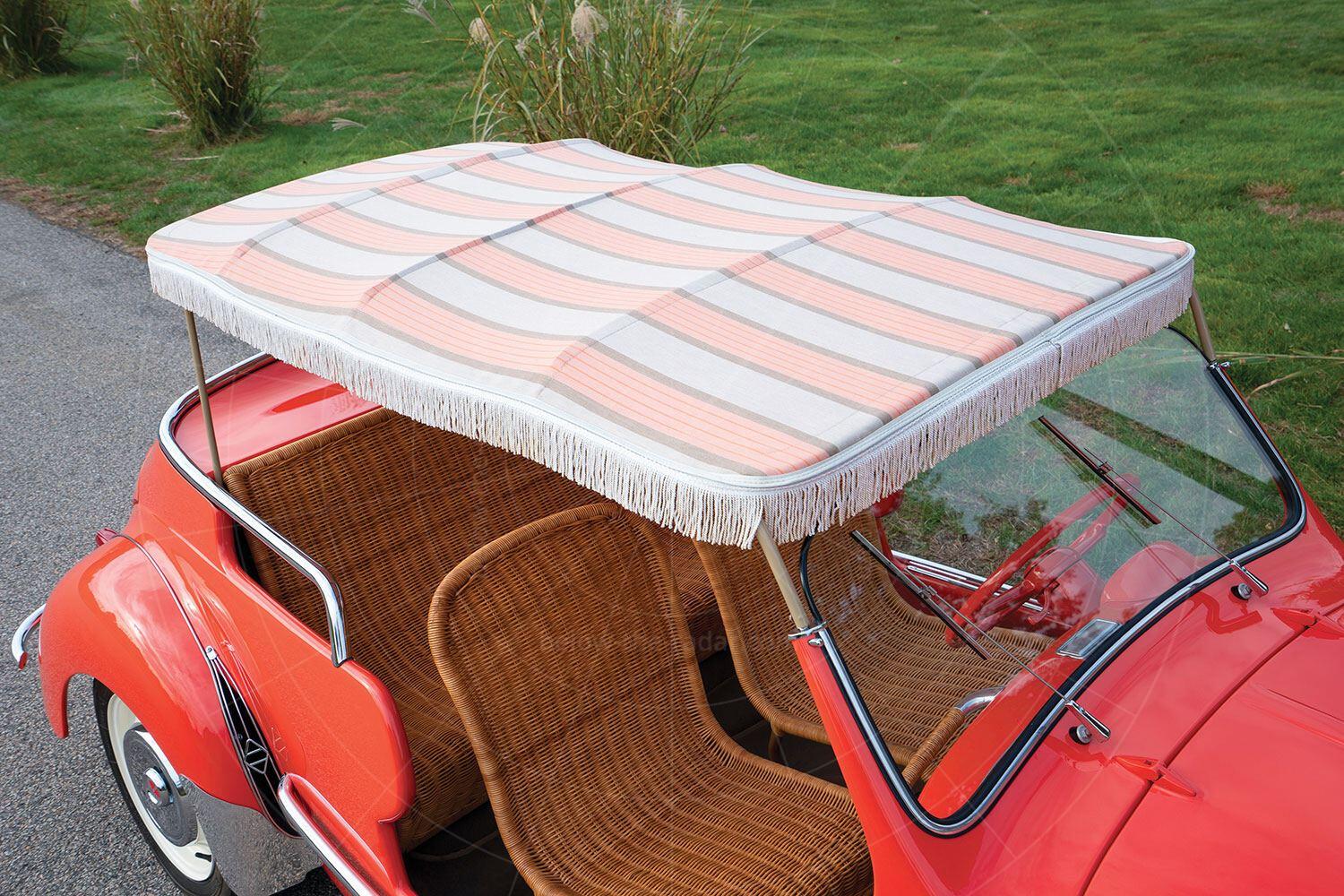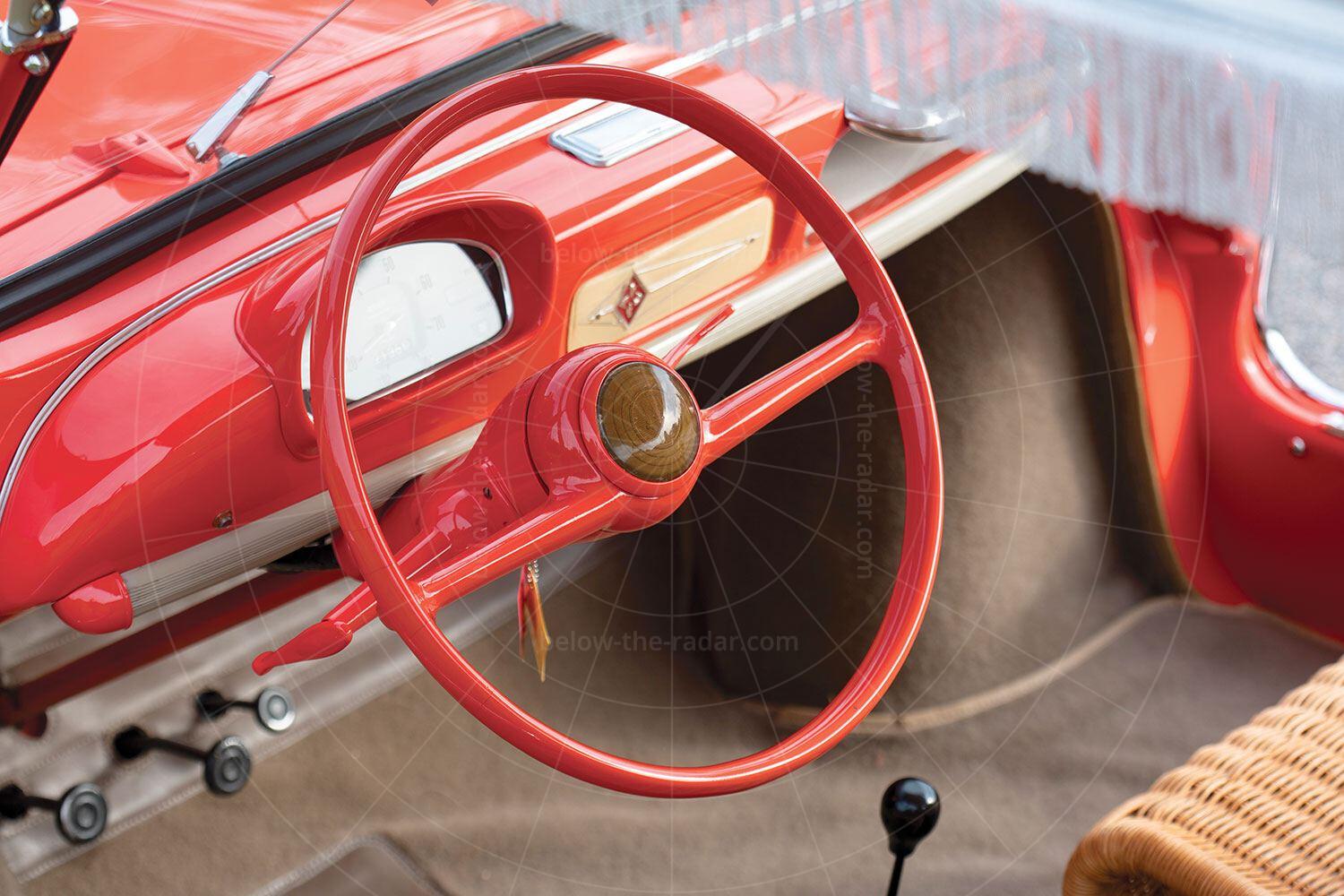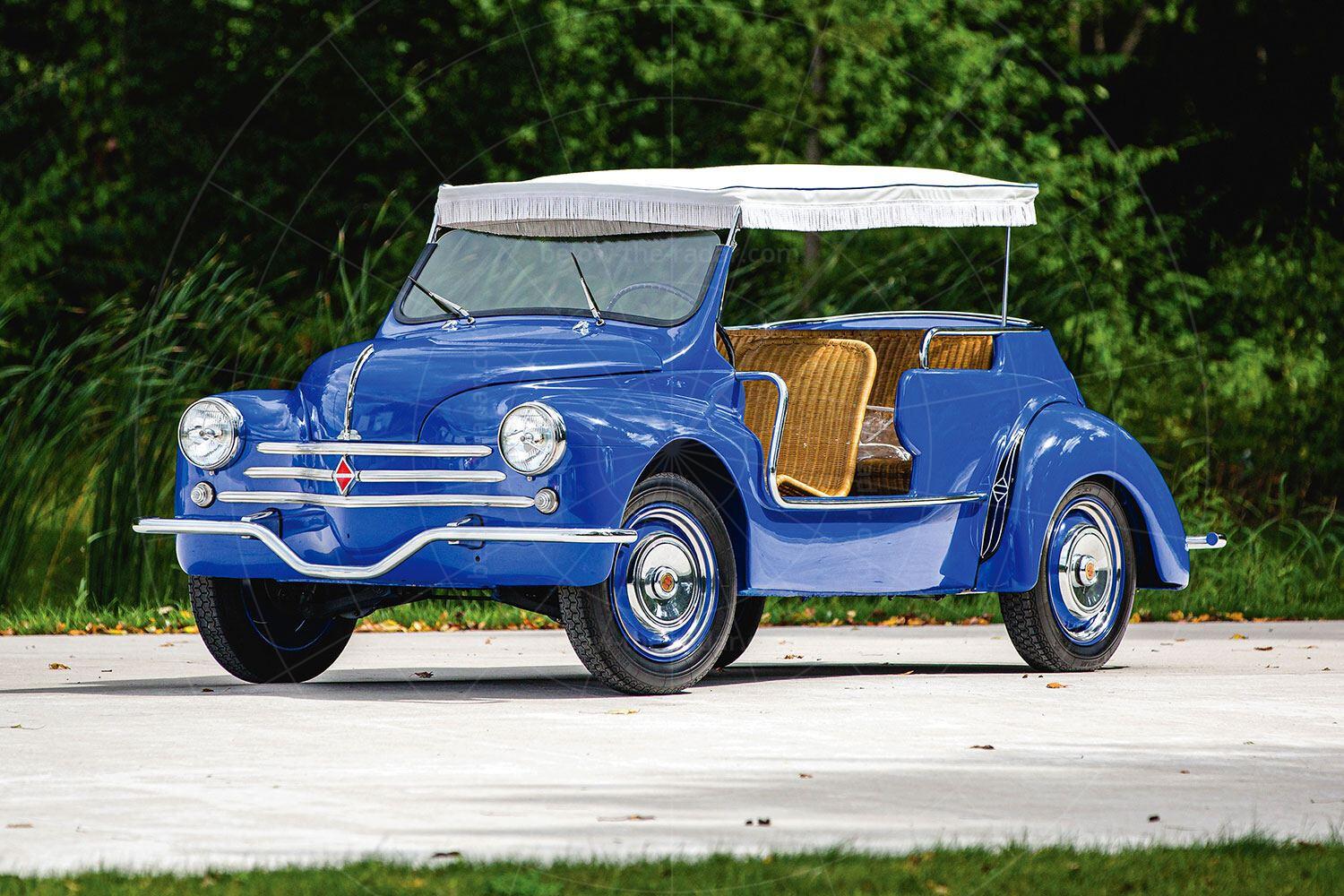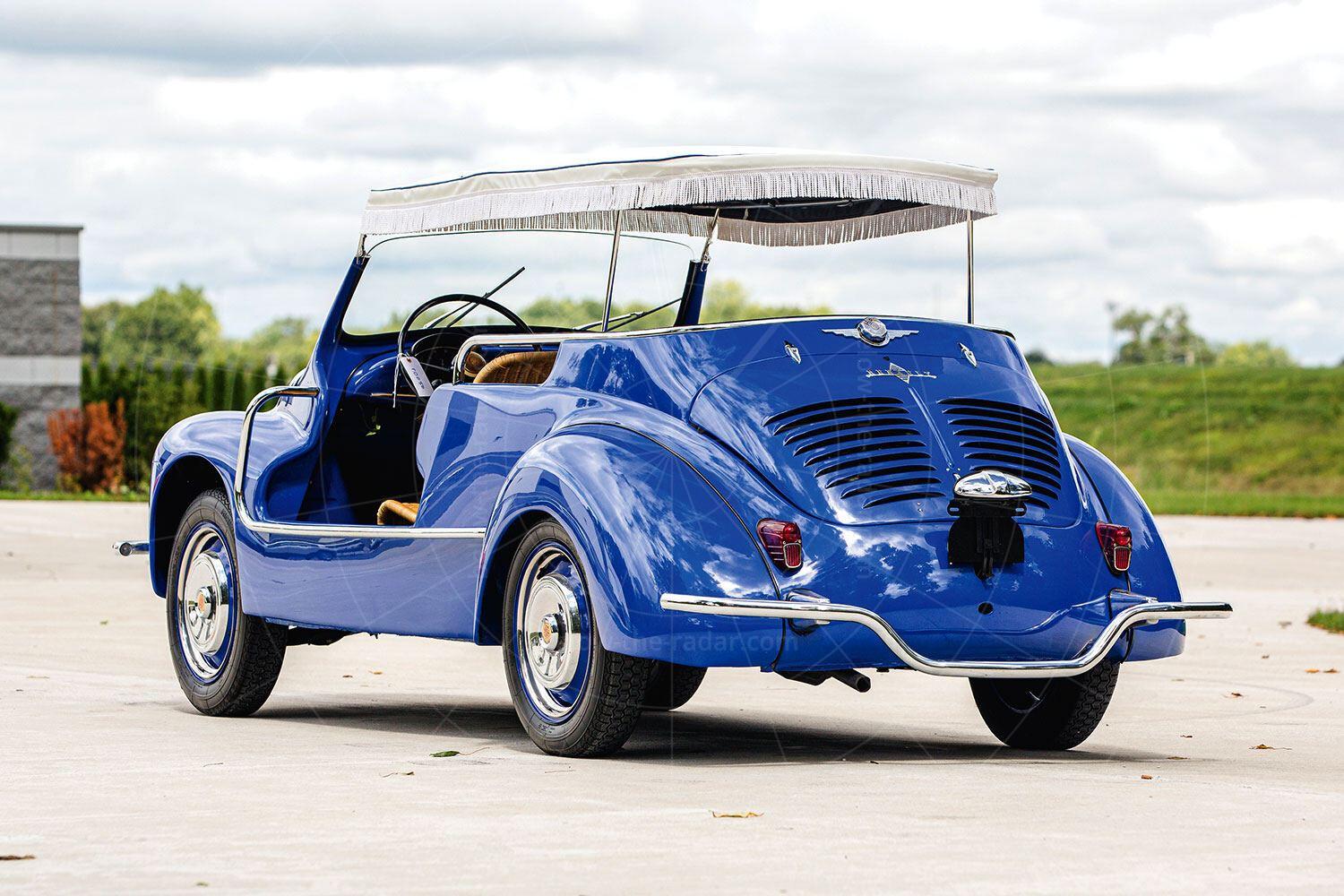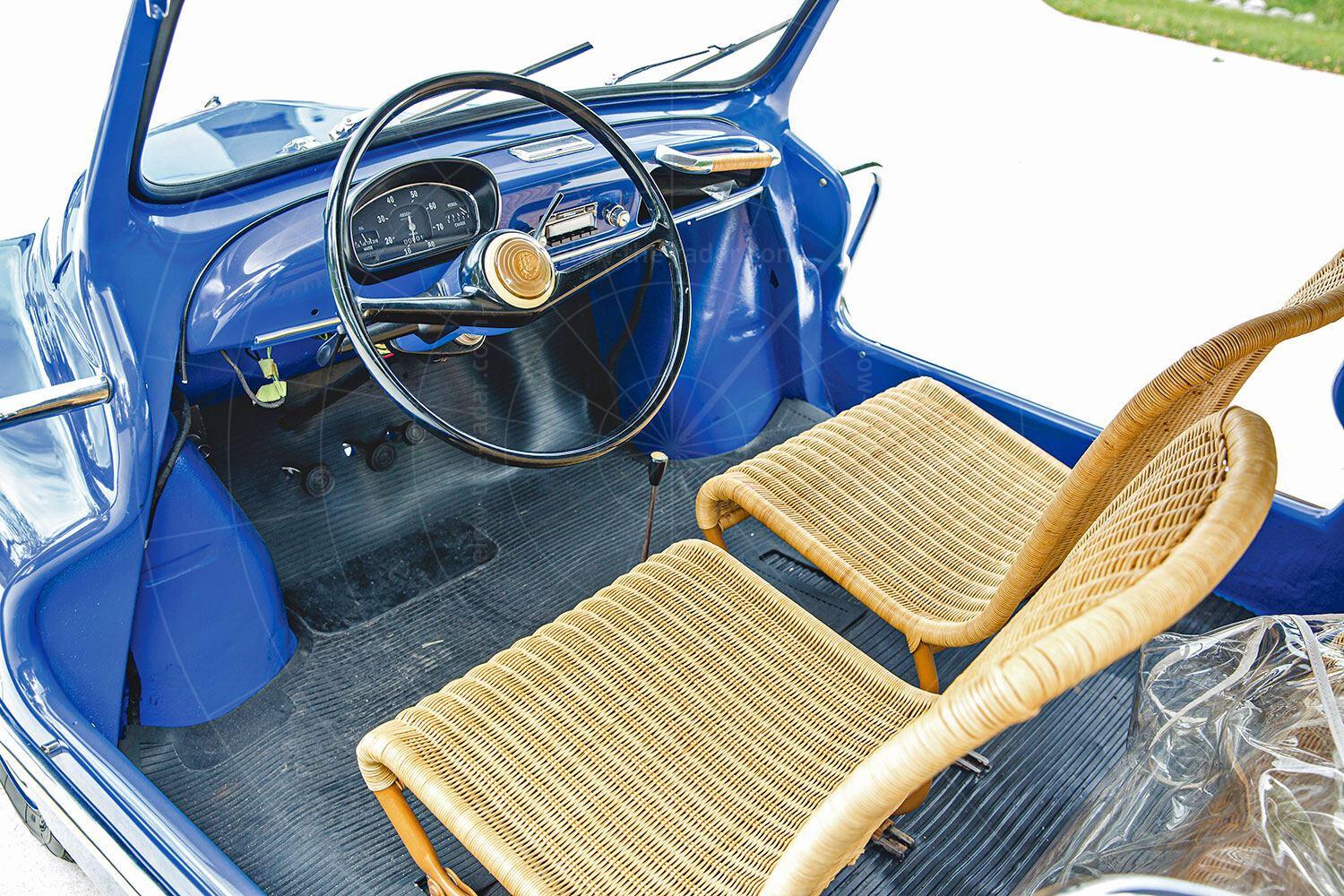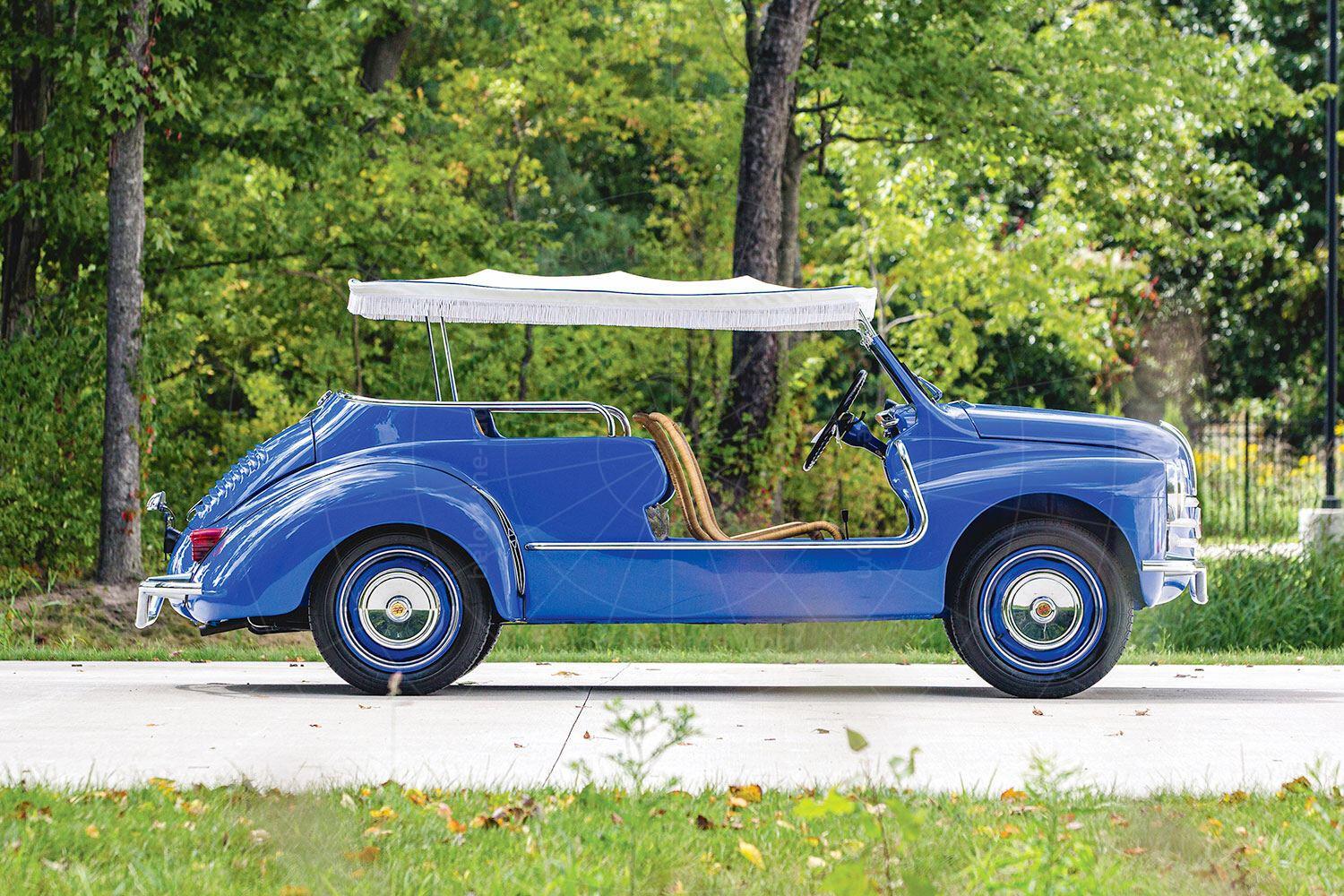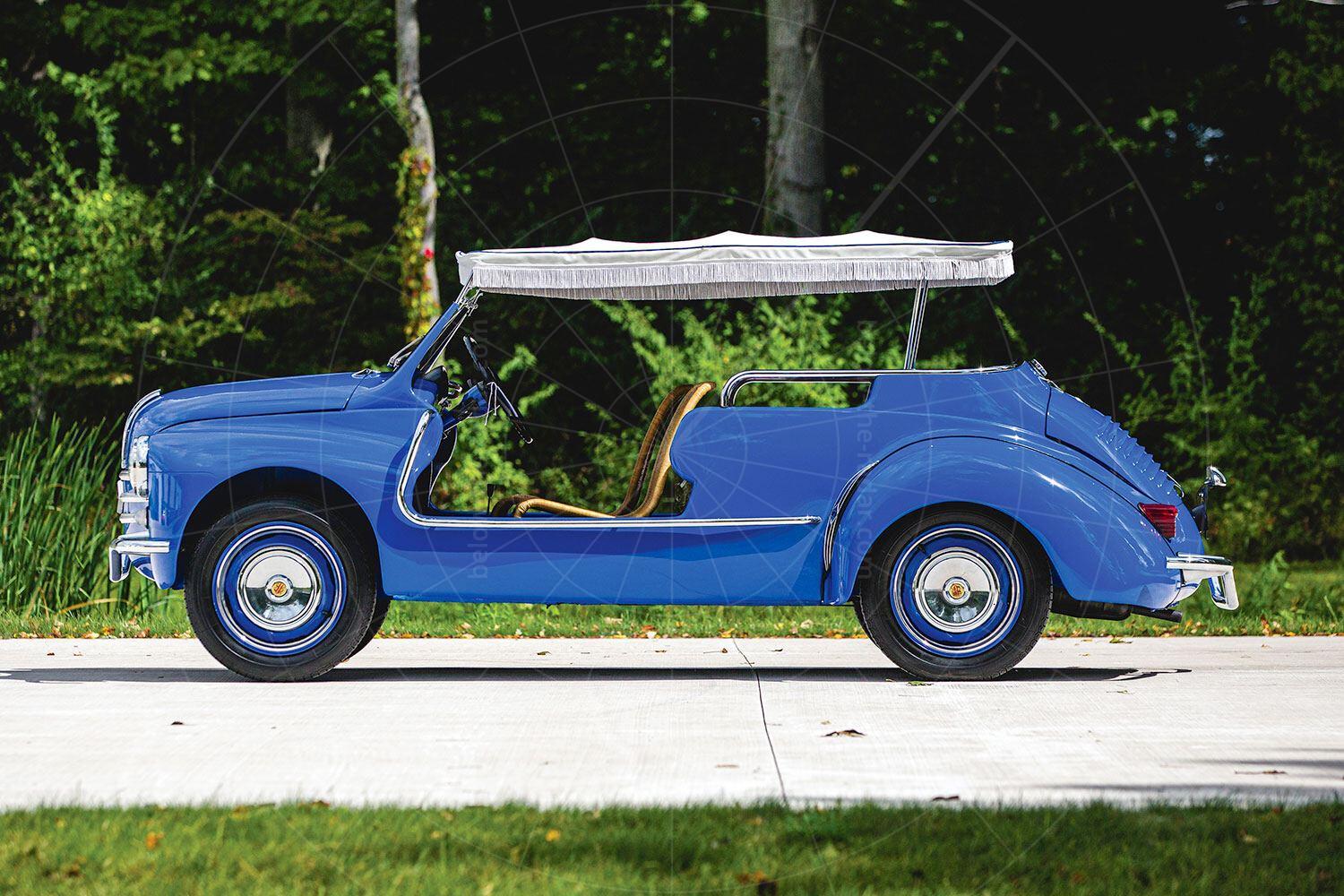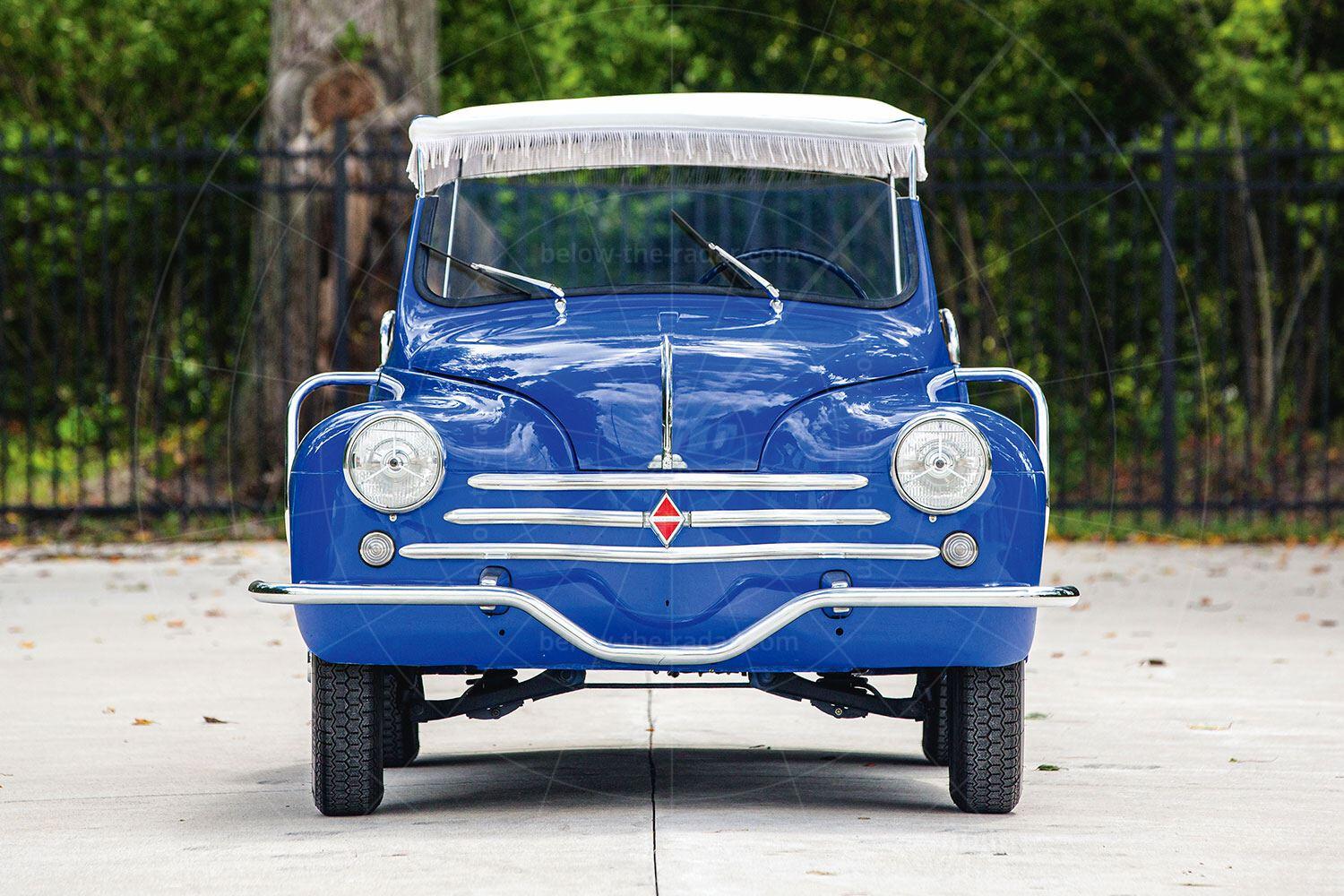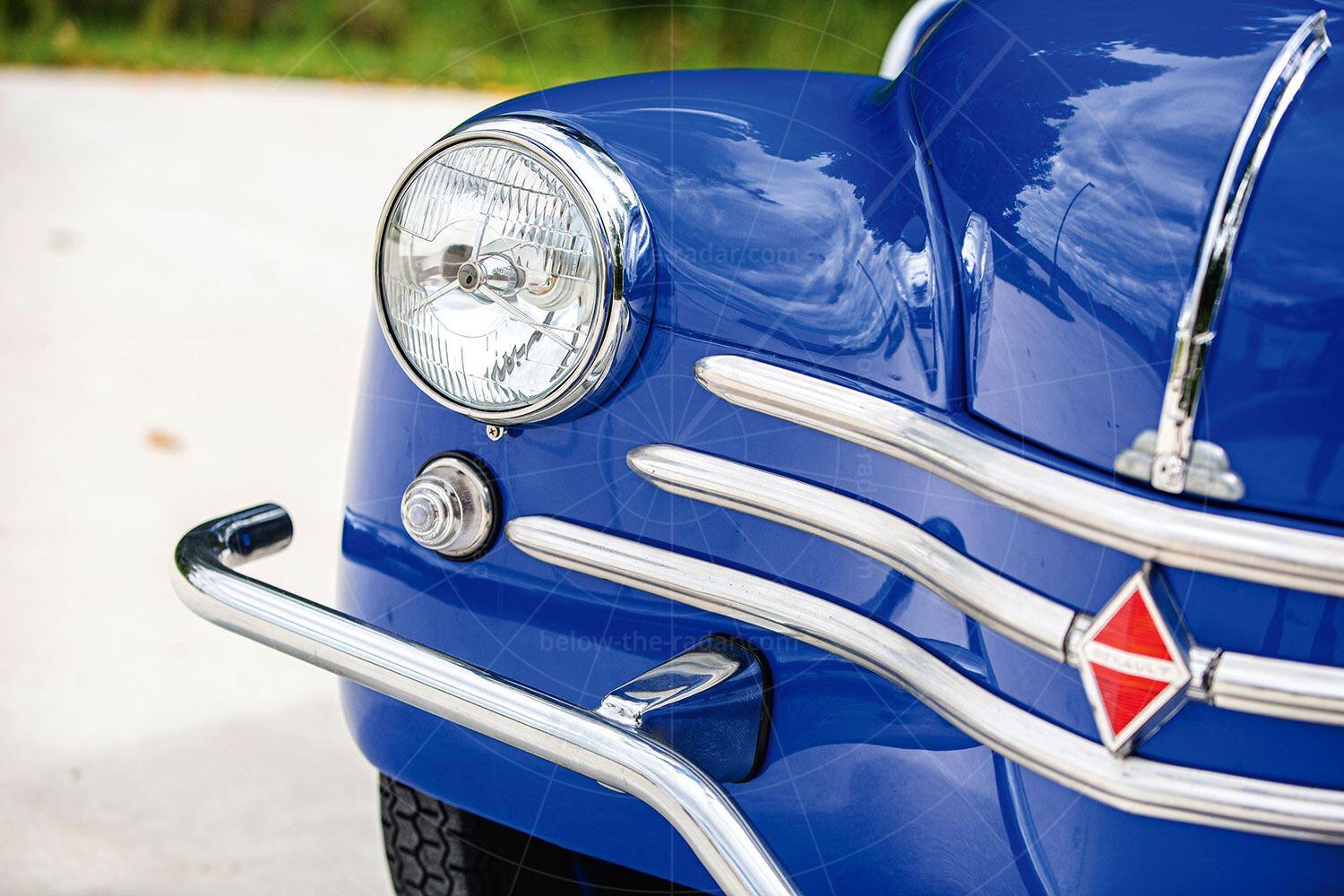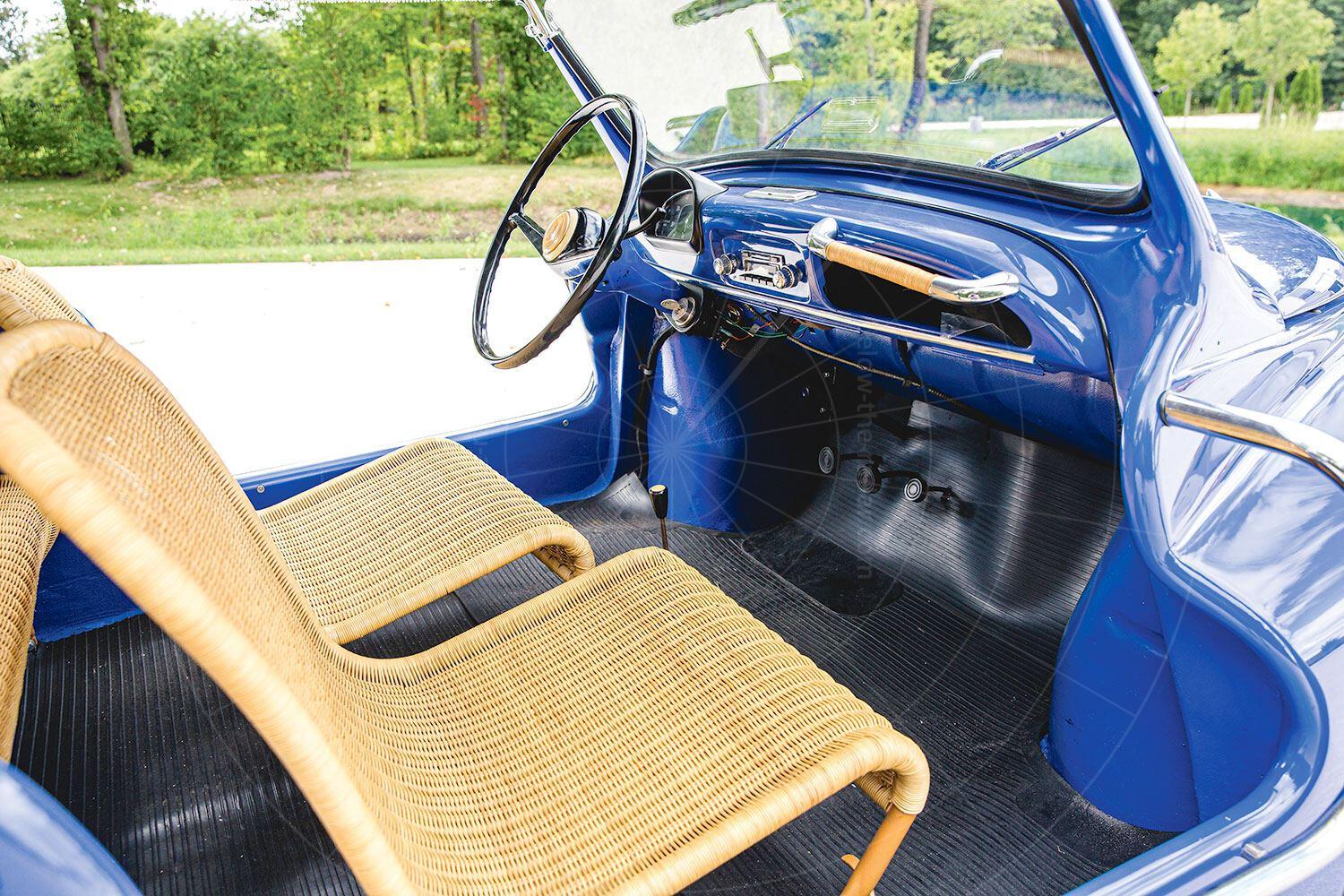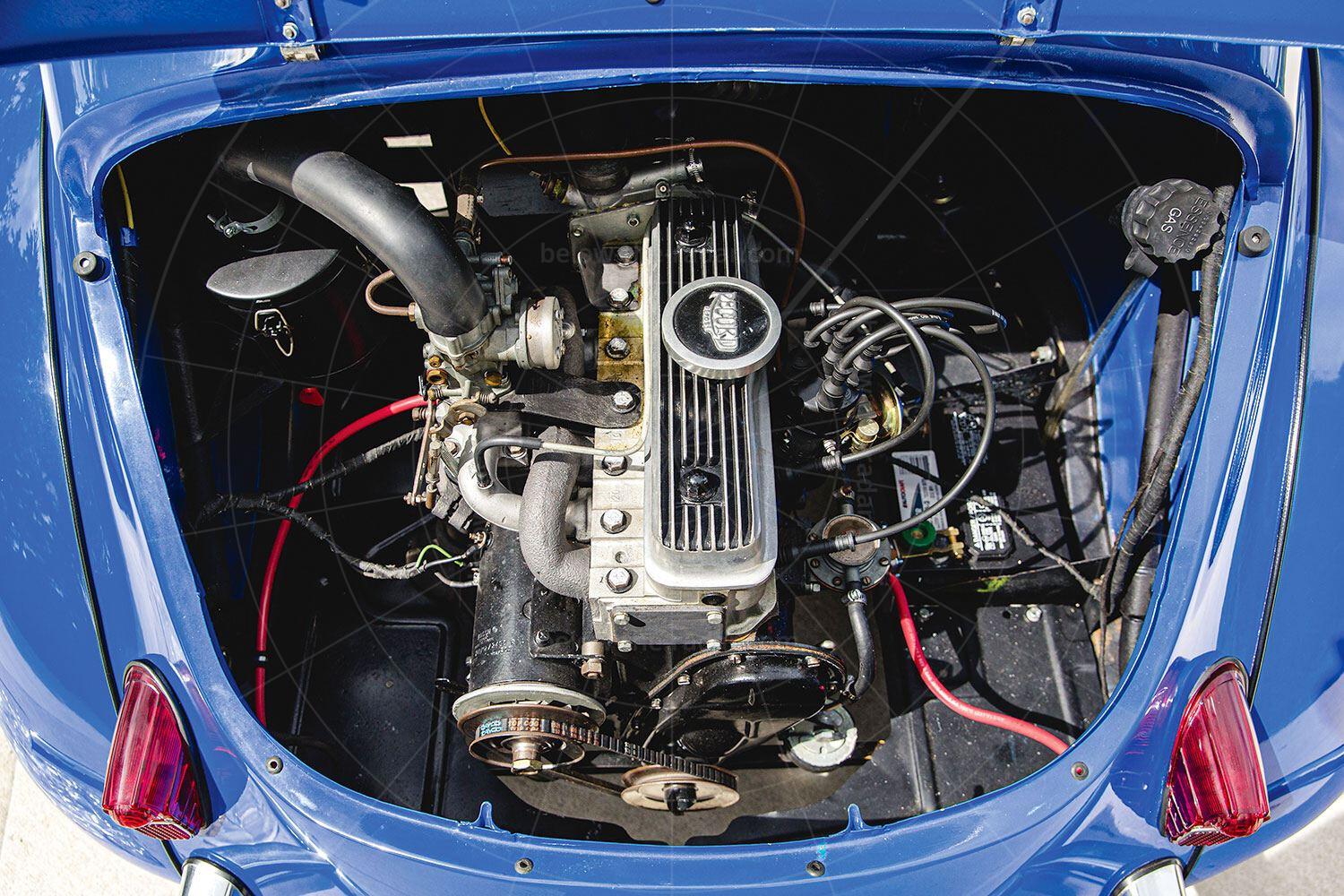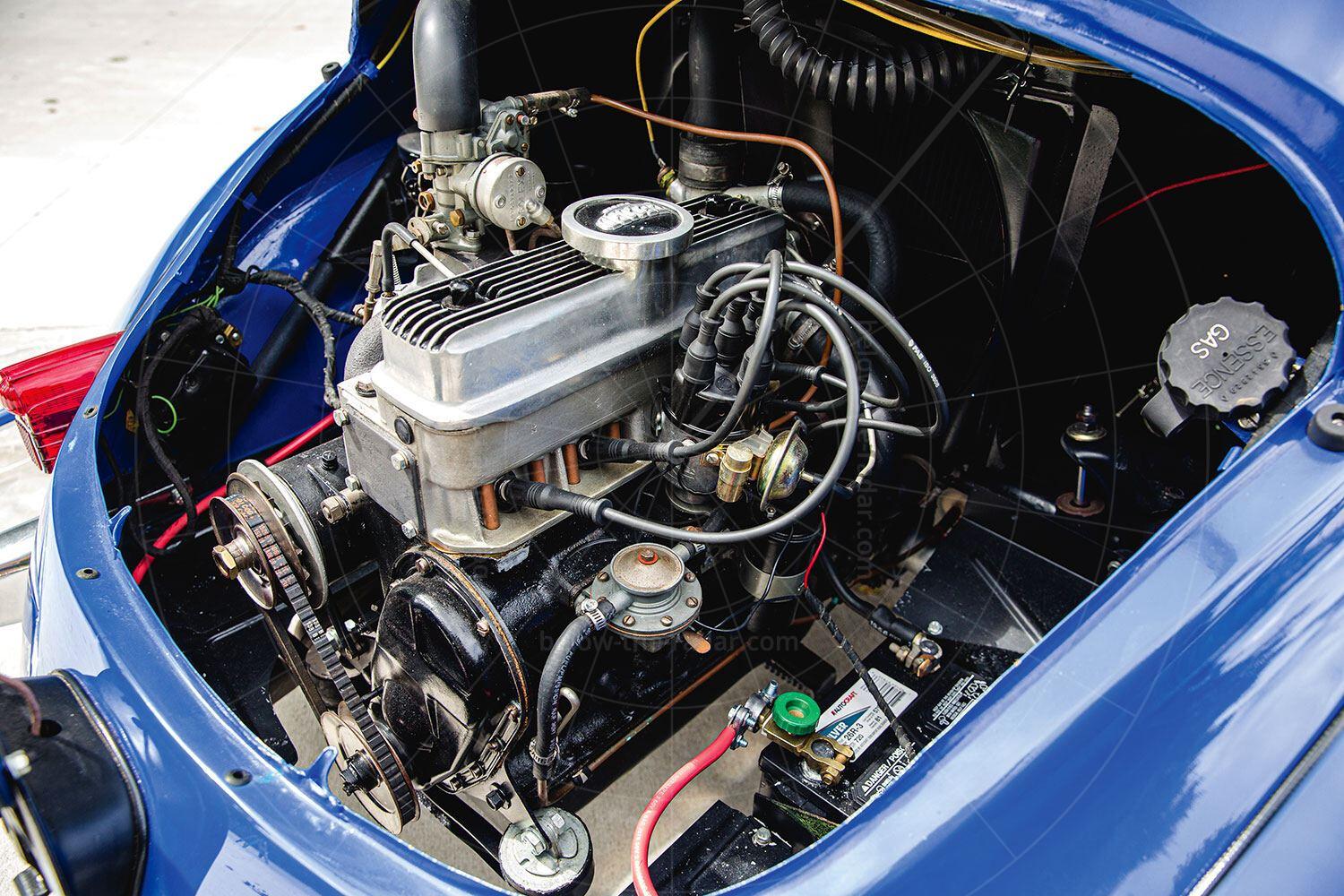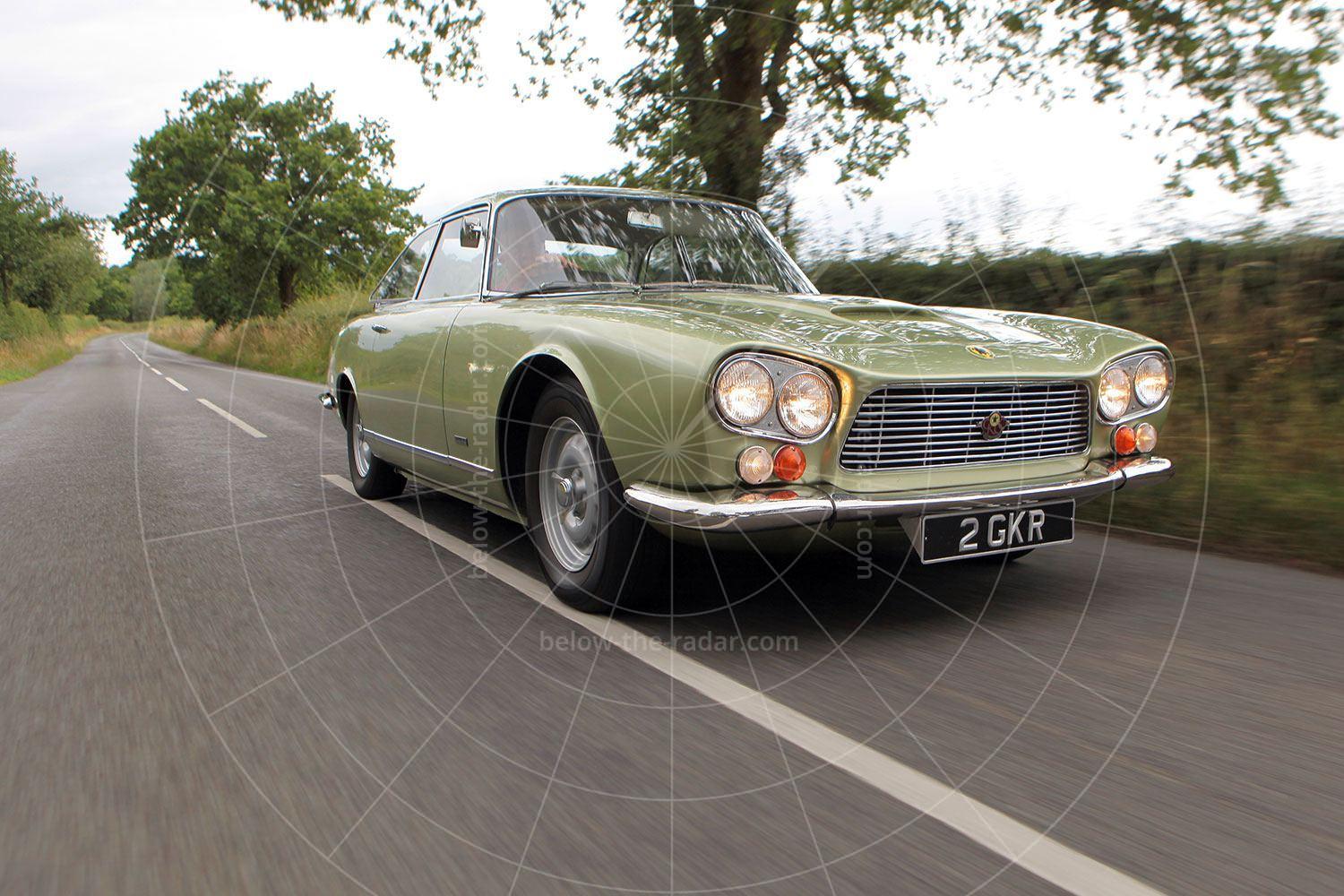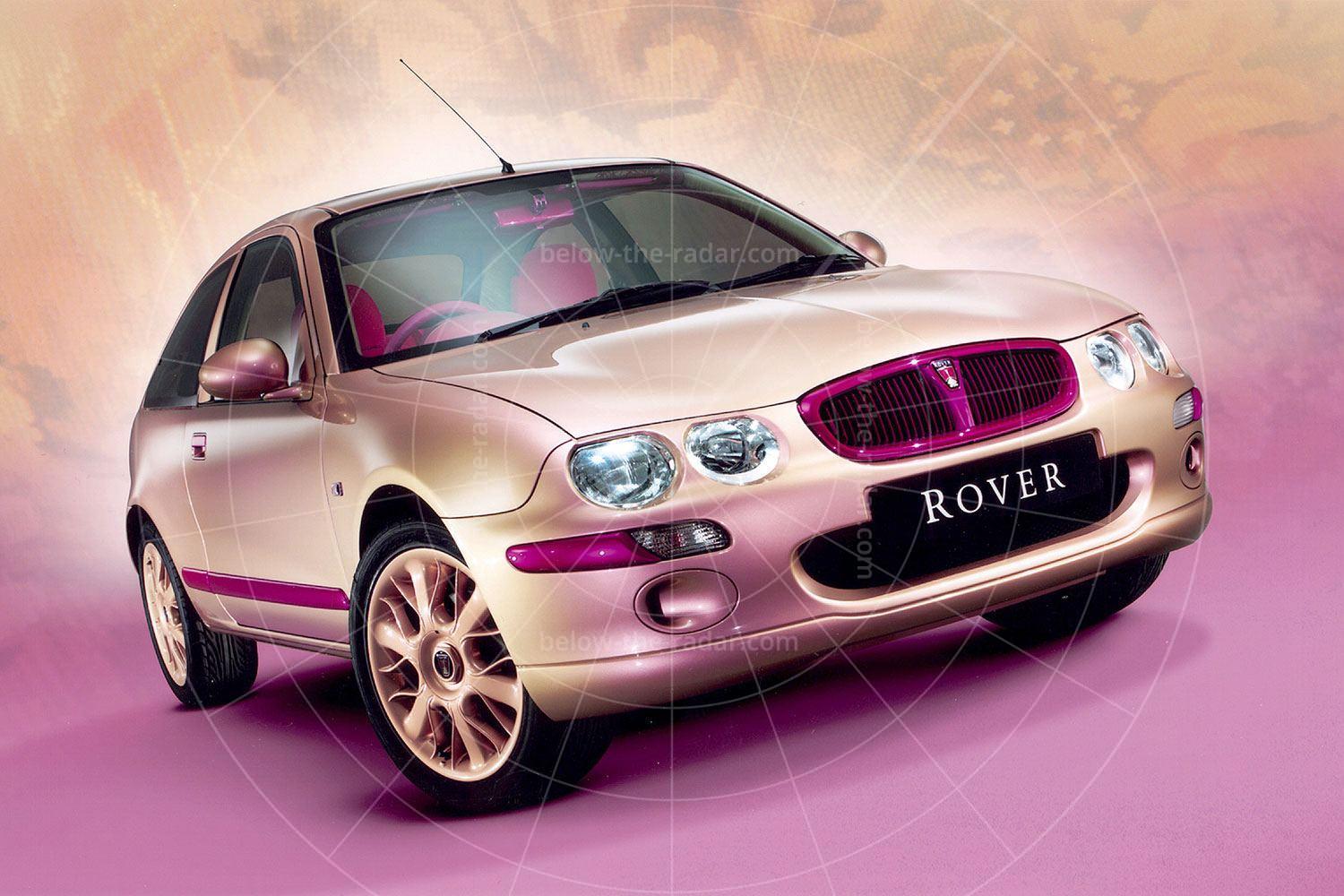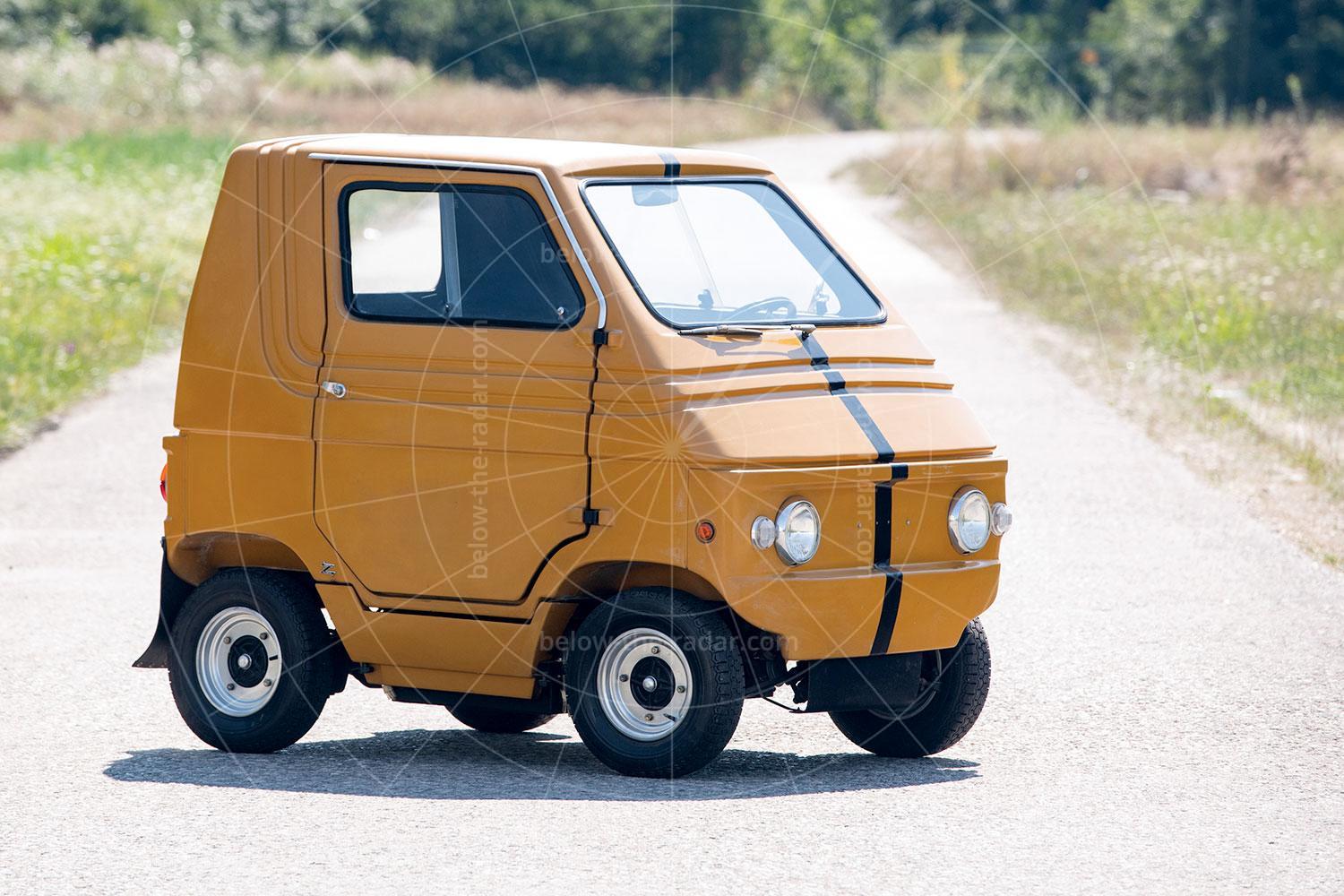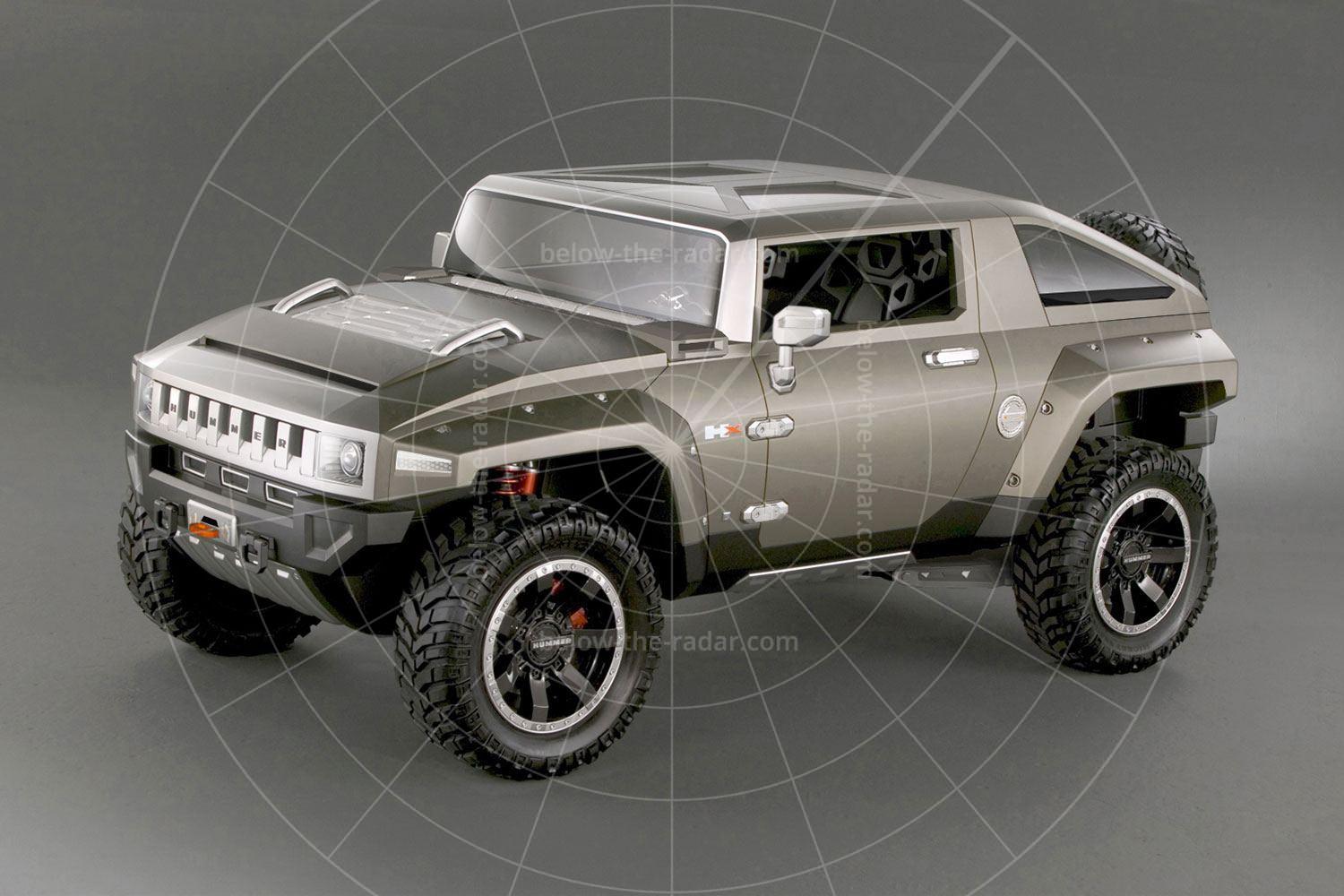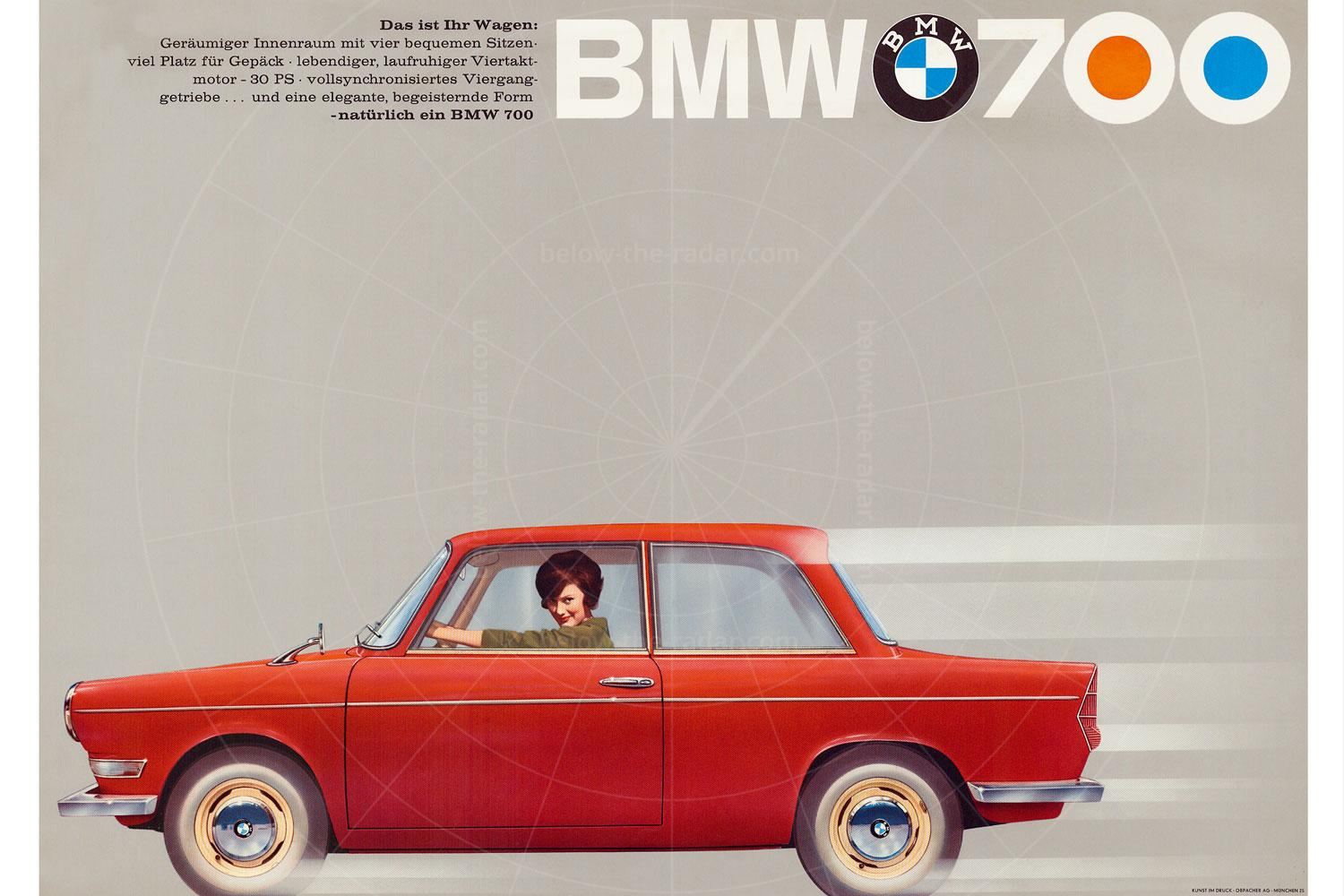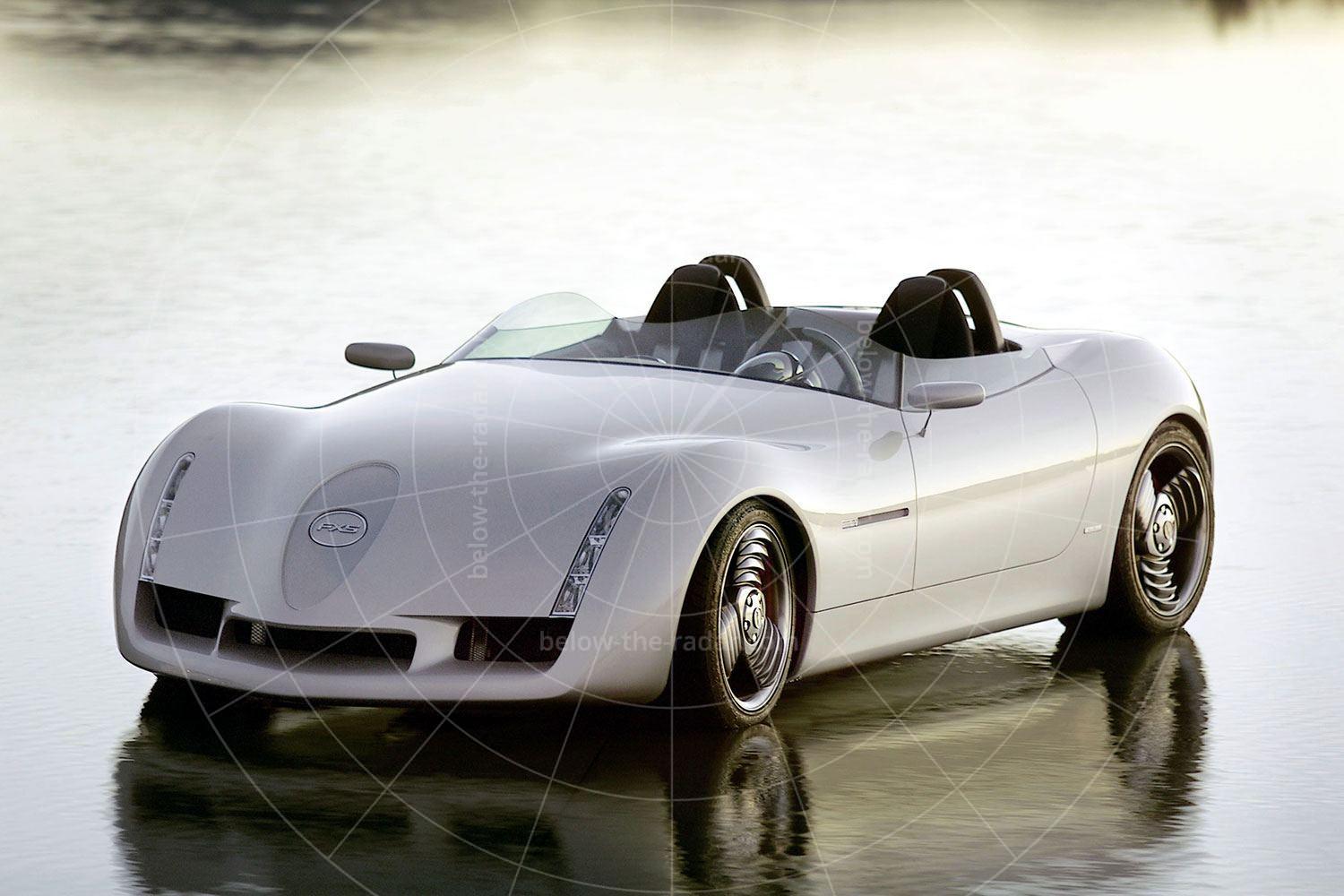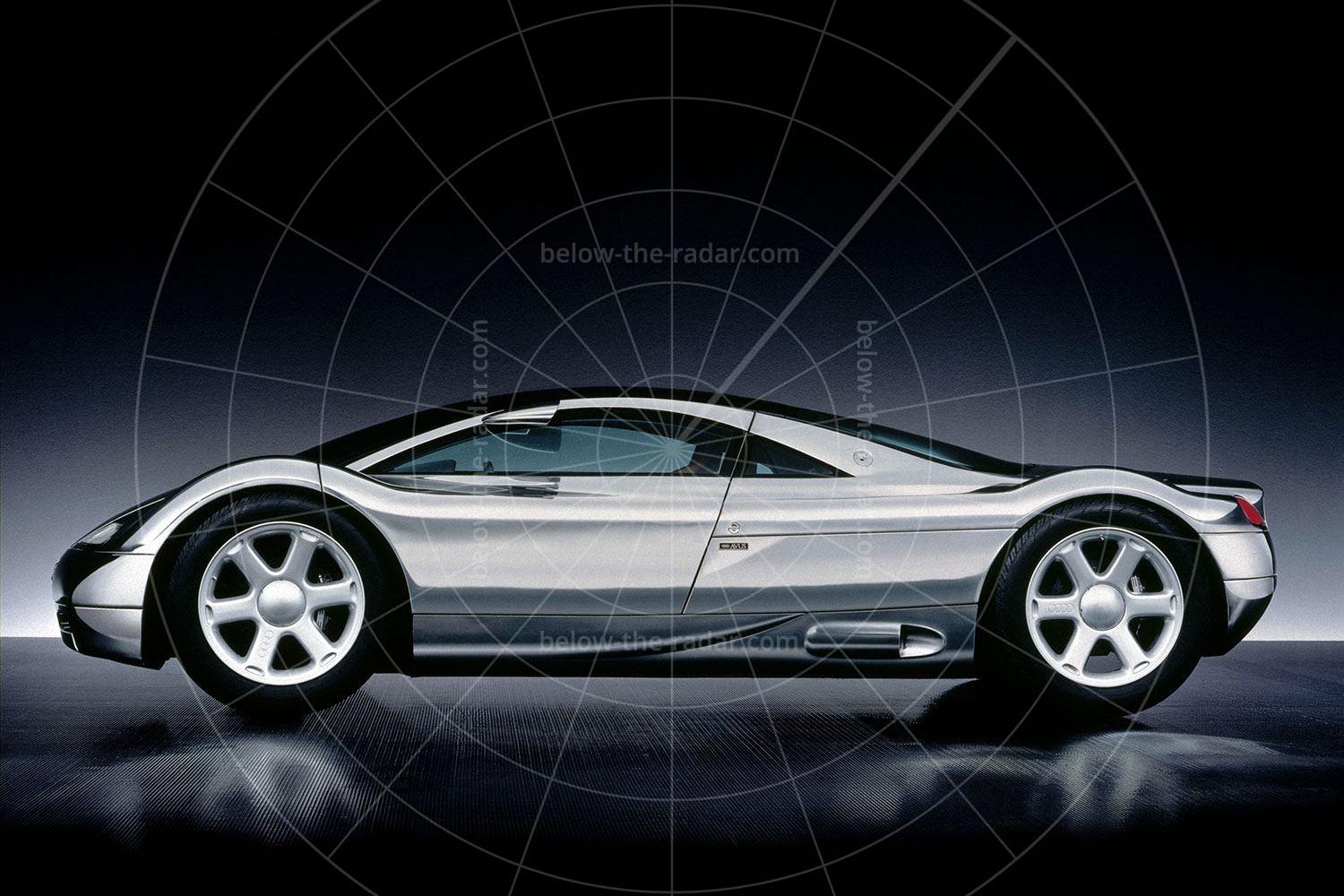The Renault 4CV is a small car with a big story. It was designed during the German occupation of France when Renault was under strict orders by its occupiers to stick to commercial and military vehicles only. But Renault engineers knew that the occupation would not last, so they set to work designing a simple, inexpensive car that would get France back on wheels after the war.
Thankfully, the German general in charge of Renault turned a blind eye to what was going on, partially out of his fondness for France, and the project carried on secretly throughout the occupation. Even Louis Renault himself was surprised at how far along the project had come by the time he discovered it.
As the engineers and designers predicted, the occupation ended and Renault found itself first on the market with a new car. It was called the 4CV; named simply for its taxable horsepower (CV standing for Cheval-Vapeur, the French equivalent to horsepower). It featured a four-door monocoque bodyshell and a rear-mounted 760cc in-line four-cylinder engine.
Production began in 1946 for the 1947 model year. Early cars were painted in surplus German military beige paint, earning the 4CV the endearing nickname La motte de beurre, or 'the lump of butter'. The 4CV became one of France’s most popular cars, returning the population to motorised transport after the war, and selling strongly until it went out of production in 1961.
By the time the Renault 4CV was being superseded by the R4, Ghia's series of Jolly (Italian for Joker) beach cars was coming to an end. The concept of the Jolly beach car originated from the Italian coachbuilder Ghia, although others built their own variations on the theme. Ghia’s boss, Gigi Segre, saw large taxi cabs being used on the small Neapolitan islands of Capri and Ischia, when he came up with the idea of a compact beach car that could be used by resorts and hotels, like a motorised rickshaw with Italian flair.
The first Jollys that Ghia built were based on Lambretta tricycles, but by 1954 the switch had been made to the Renault 4CV. However, Ghia is best known for its Fiat-based Jollys using the 500 and 600 saloons as a starting point, although the final cars of the early 1960s were all based on the Fiat 500 Giardiniera.
The Jolly formula was pretty simple. Starting with a small and affordable family car, Ghia produced a skimpy body which was little more than a floor assembly without any doors or roof, into which wicker seats would be fixed, although the most basic Jollys featured plastic seats. An awning-style fabric roof would be fitted and a chain would be draped across the side of the car in place of any doors.
While more Jollys were based on Fiat models rather than Renaults, the 4CV provided a superior platform as it was larger than the Fiat and it had a more powerful, rear-mounted engine, plus it was arguably even more attractive than the 500 and 600 – and it was definitely more of a looker than the Renault R4 Jolly that was shown in 1961.
Many thanks to Hyman Ltd for the use of its pictures to illustrate this article

